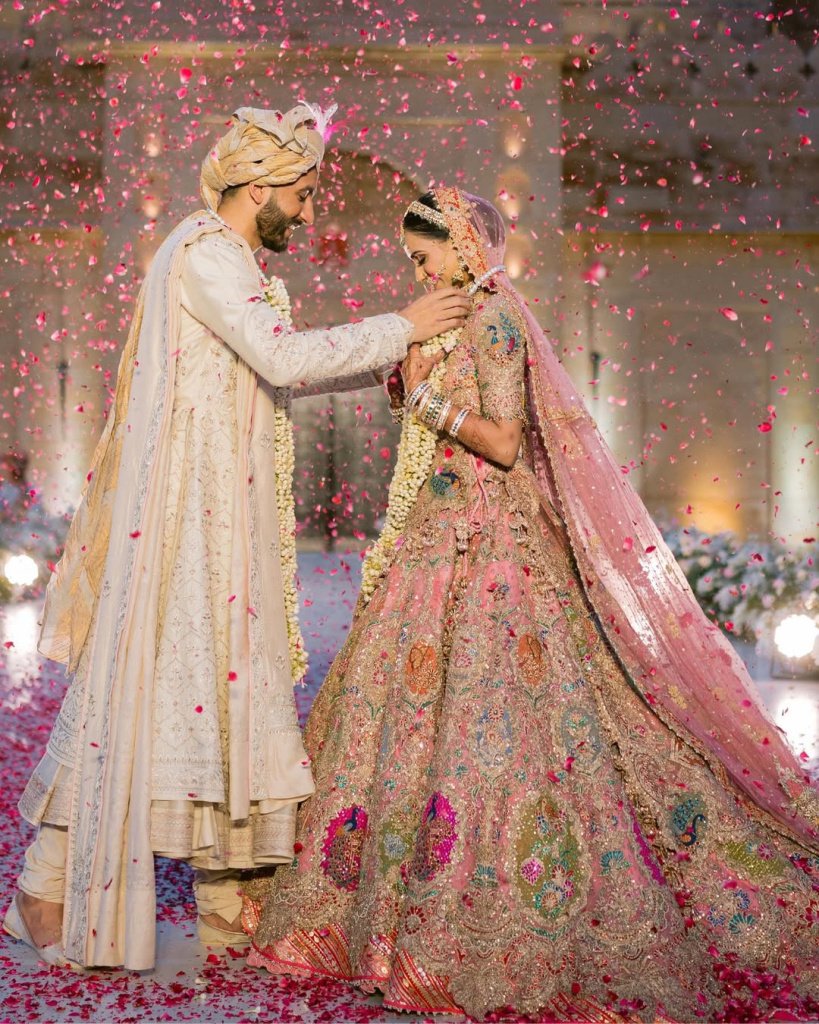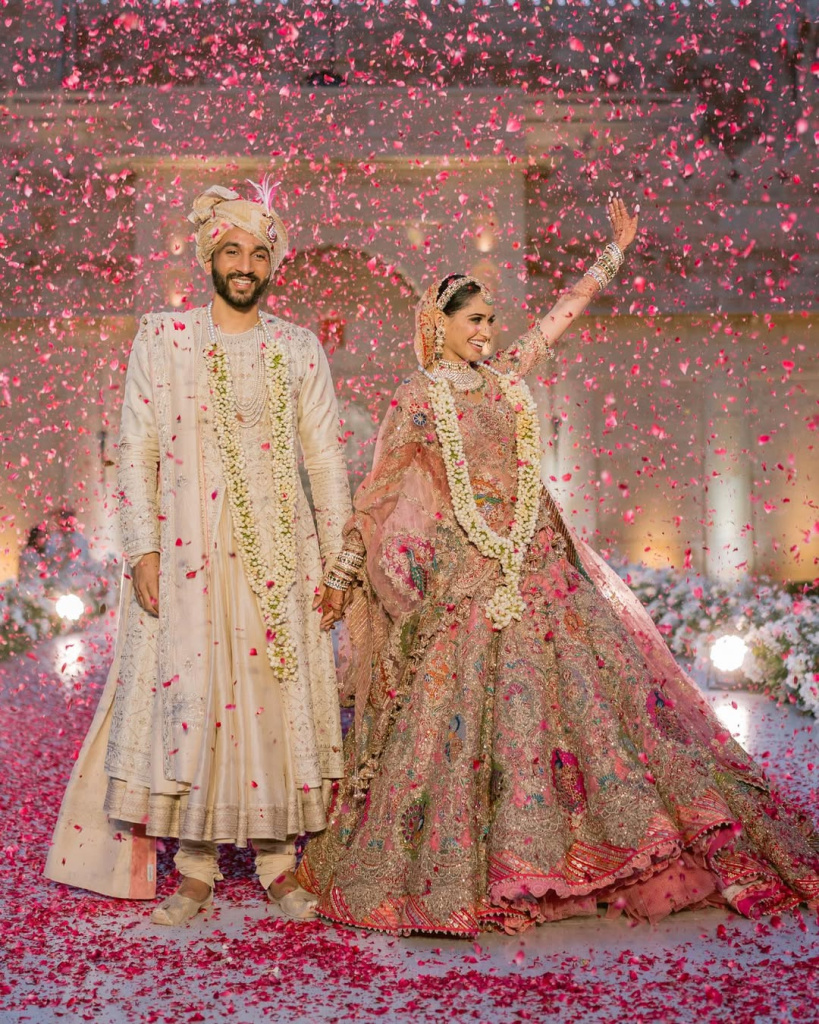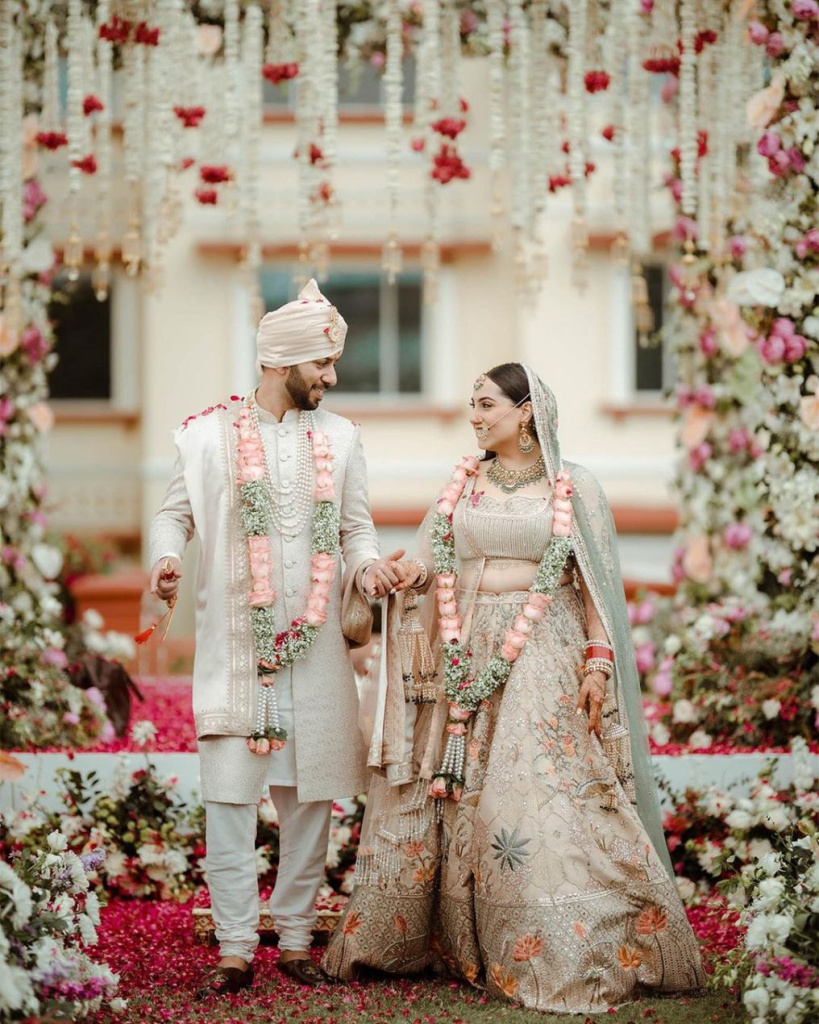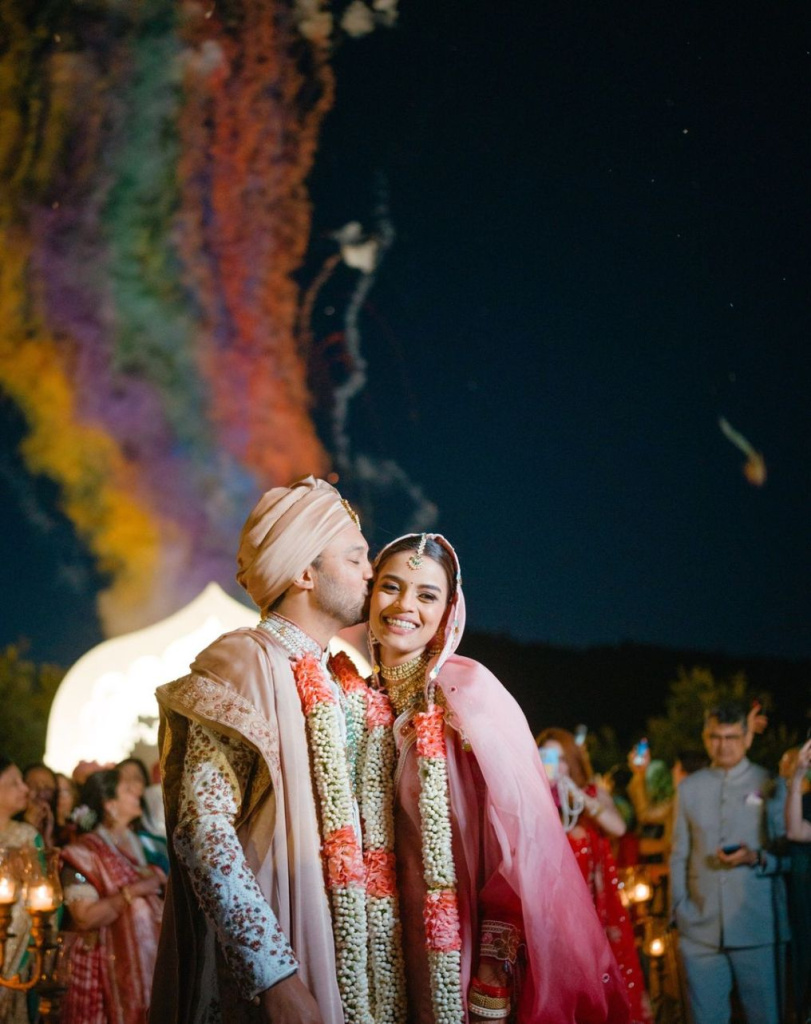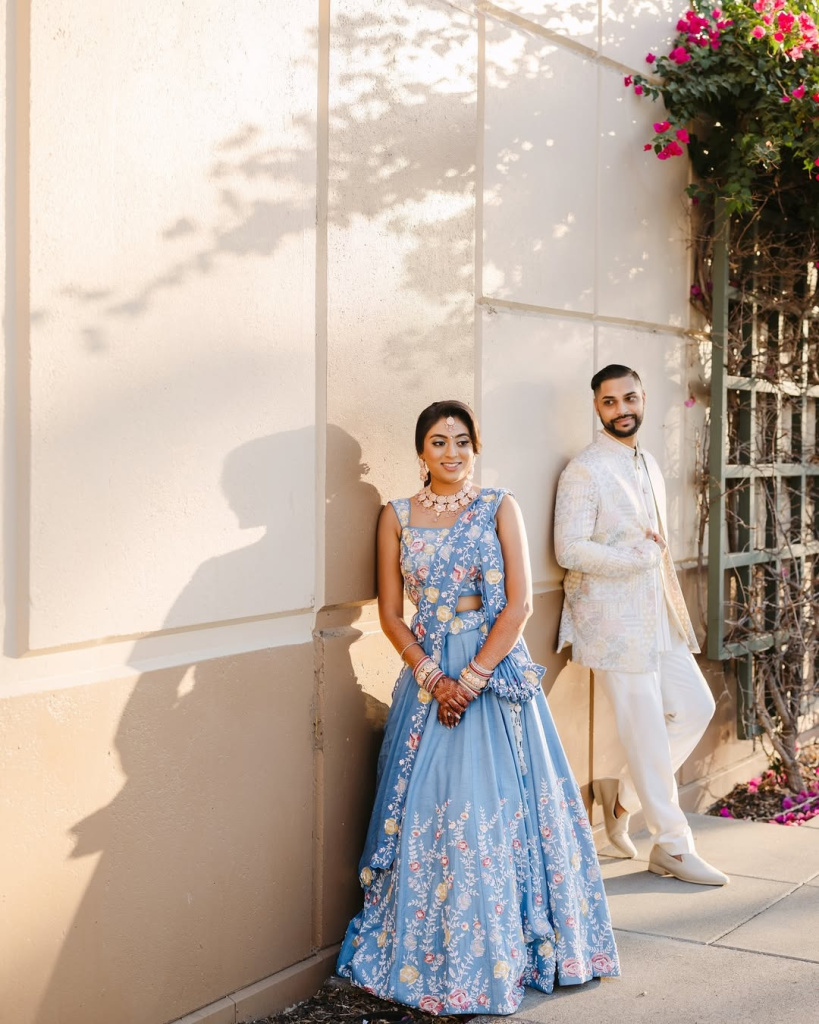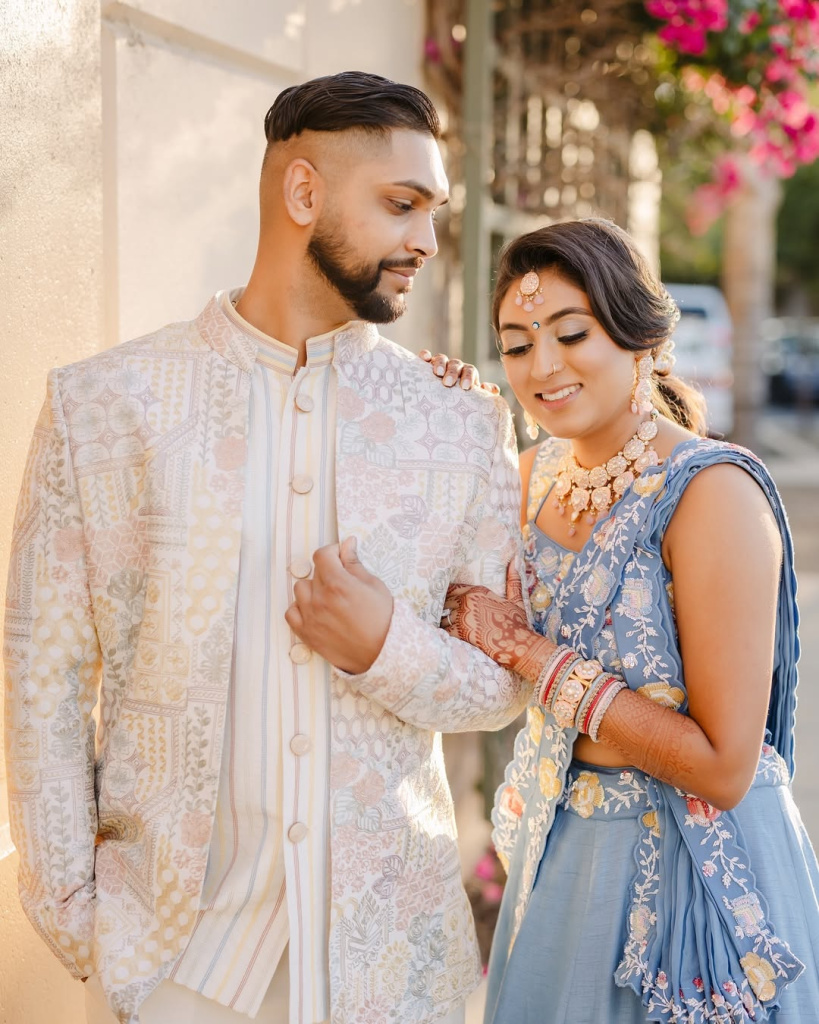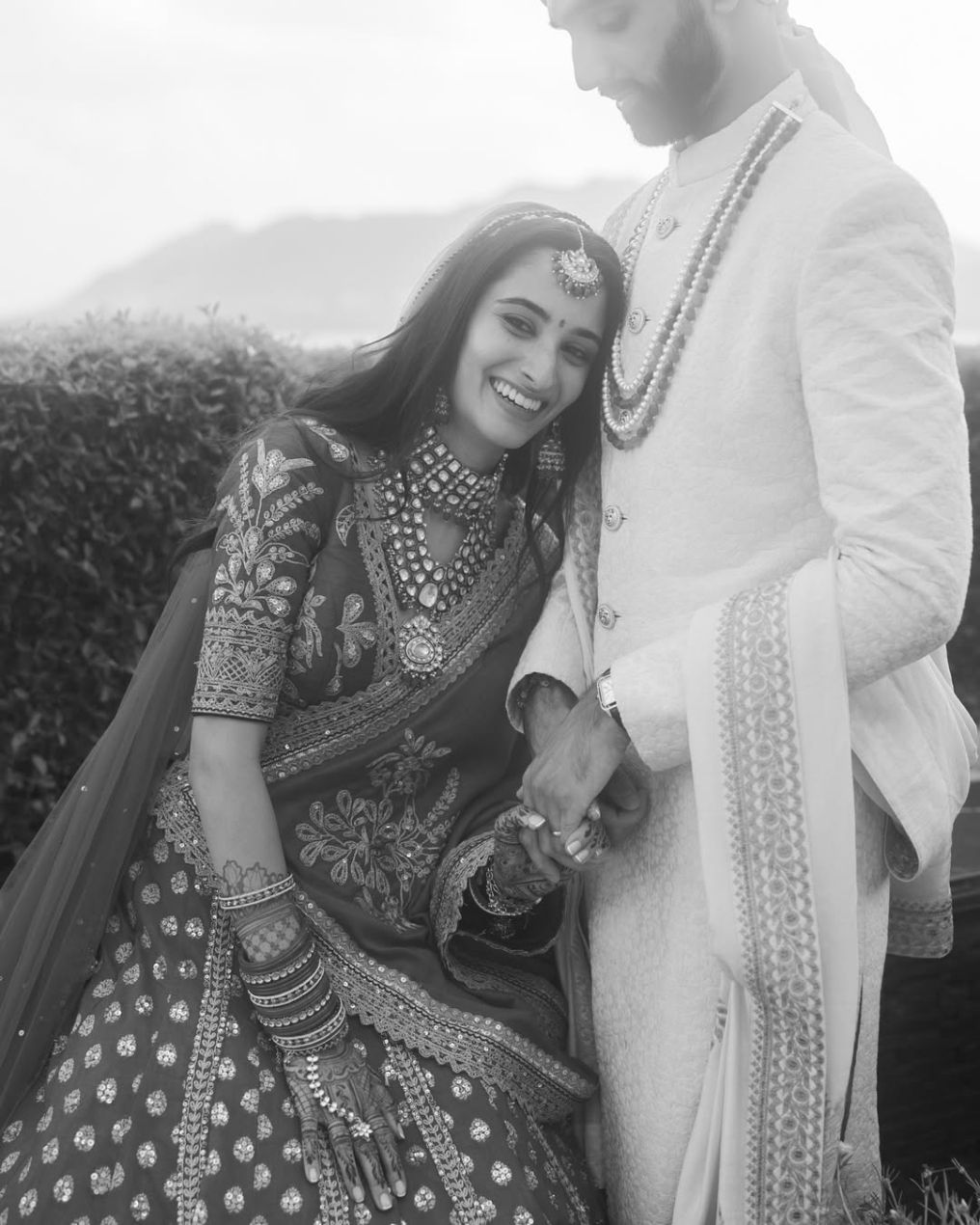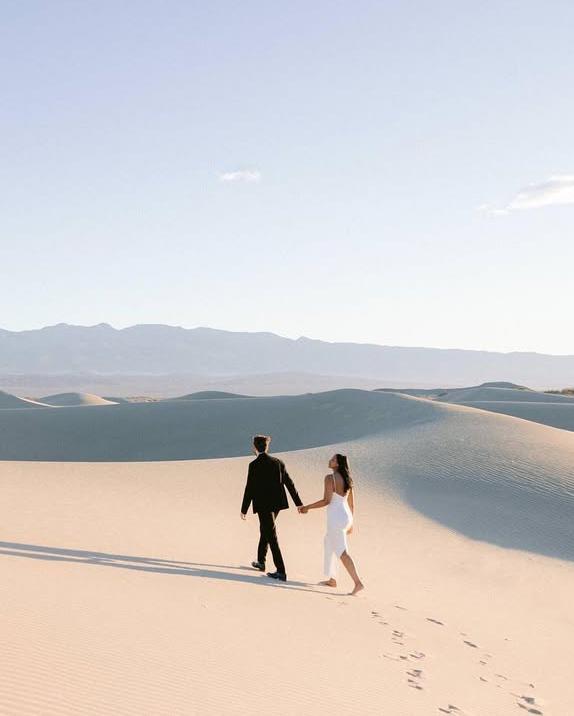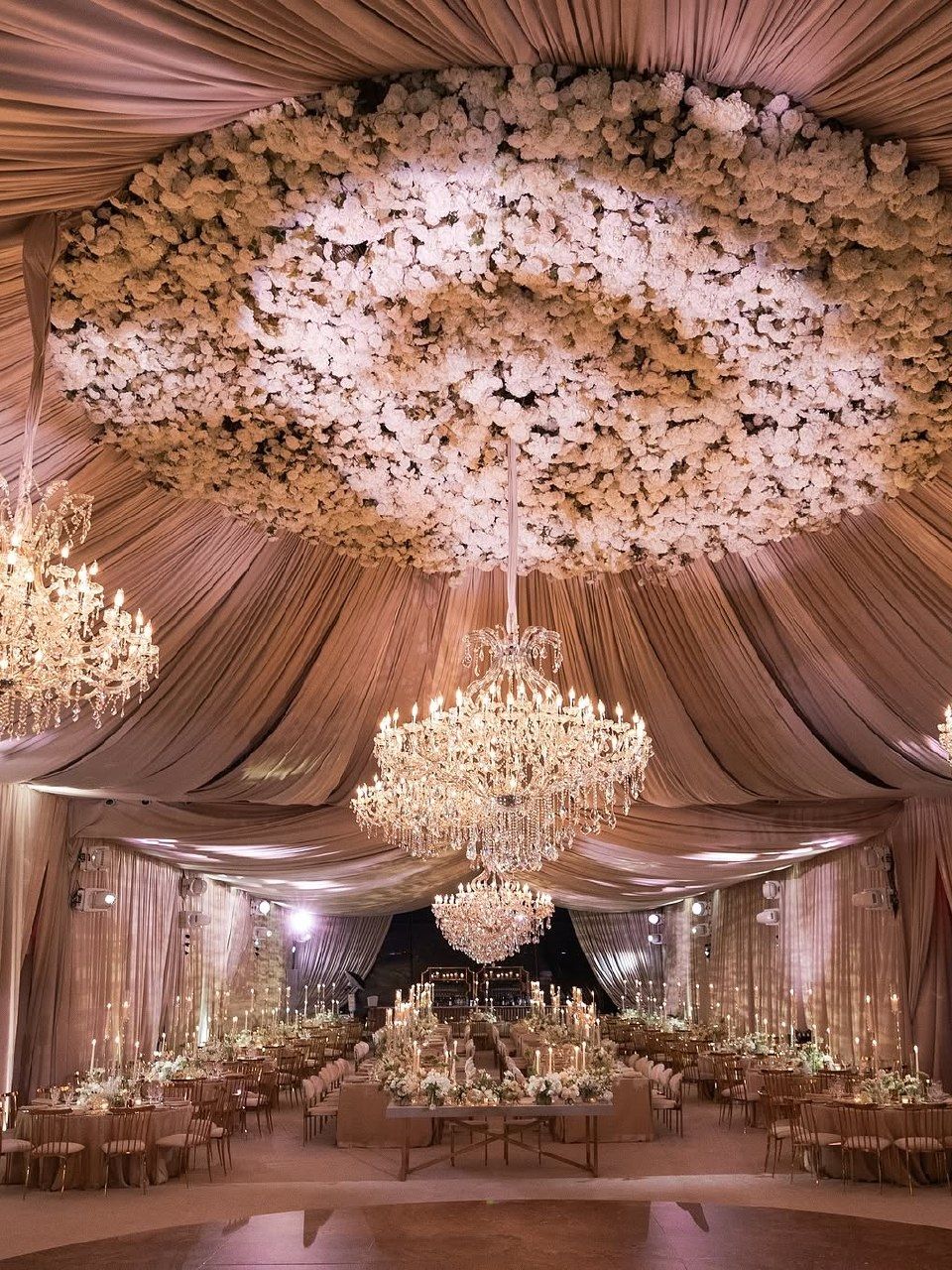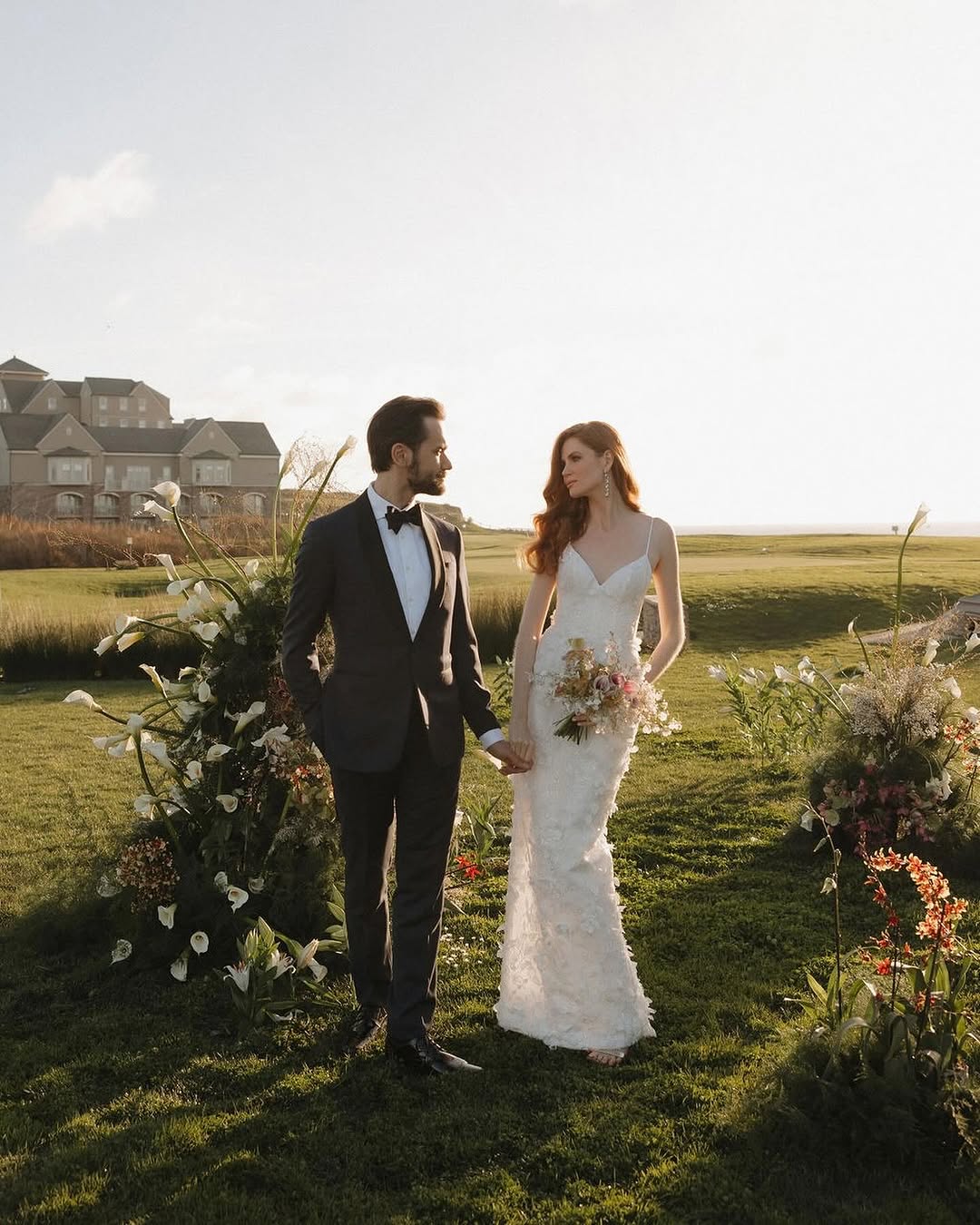Your Ultimate Guide to Indian Weddings
- Author: Natali Grace Levine
- Reading time: 17 min 22 sec
- Publication date: 02/12/2025
- Updated: 10/13/2025
Few celebrations in the world can rival the grandeur, emotion, and sheer spectacle of a wedding in India. Equal parts family reunion, carnival, and sacred ritual, these multiday extravaganzas blend centuries-old customs with modern flair. Whether you’re planning your dream Indian Hindu wedding, attending one, or simply want a peek into this vibrant celebration of love, get ready to plunge into a world of color, sound, and unforgettable moments.

Cultural Tapestry: The Many Faces of Indian Weddings
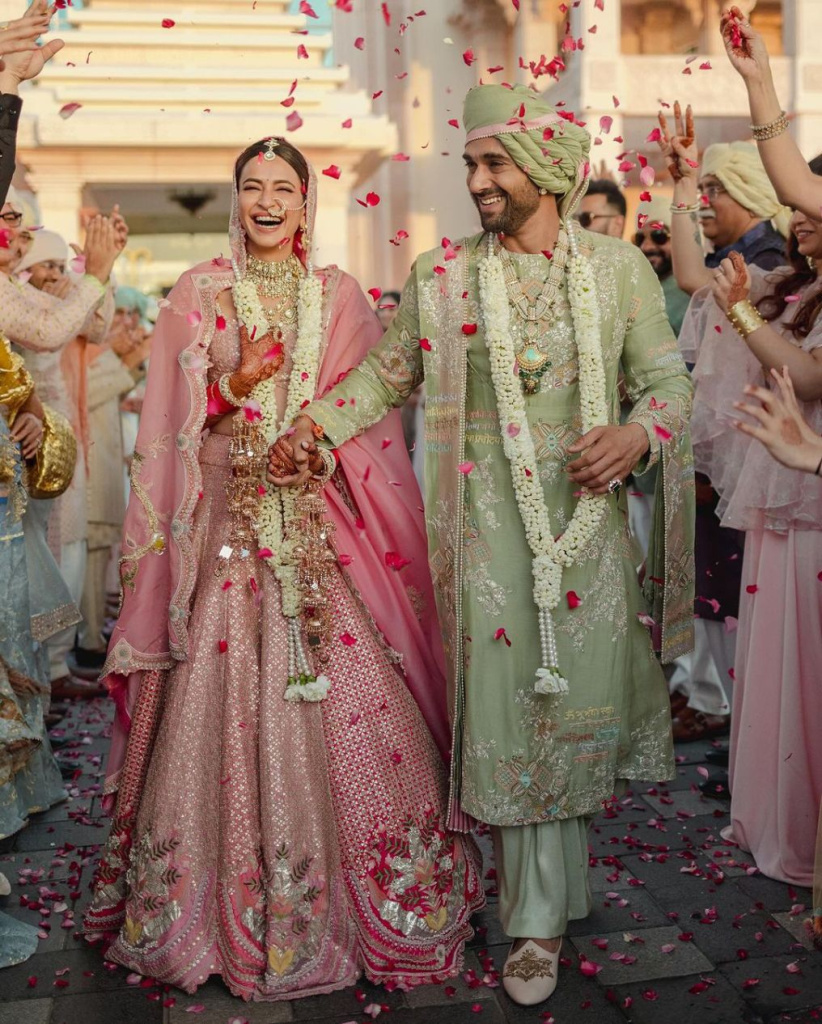
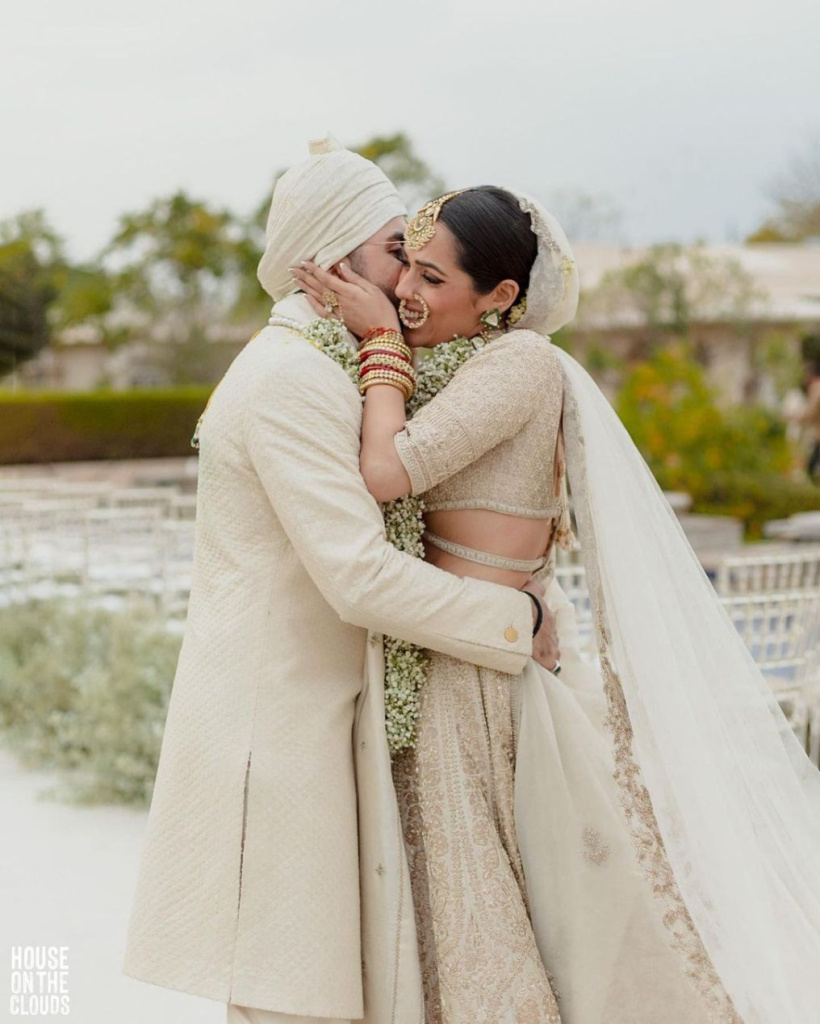
India is not just a country—it’s a subcontinent where every region, religion, and community brings its own signature style to the wedding stage. While North Indian weddings may feature a boisterous baraat and Rajasthani weddings might echo palace-like grandeur, there are countless other flavors that make Indian weddings such a mesmerizing tapestry. Here, we delve deeper into three fascinating examples of how diverse Indian weddings can be.
Bengali Hindu Wedding
A Bengali Hindu wedding is a vibrant affair that seamlessly blends culture, rituals, and—of course—culinary delights:
- Aiburo Bhaat: Before the wedding, both bride and groom enjoy a special feast at their respective homes, symbolizing their “last meal” as unmarried individuals.
- Gaye Holud (Haldi): Similar to other Hindu traditions, a haldi (turmeric) paste is applied to the bride and groom to bring good luck and a radiant glow. However, in Bengali customs, this paste is often sent from the groom’s house to the bride’s home, making it a unique, love-filled gesture.
- Shubho Drishti: One of the most iconic moments—a cloth or pair of betel leaves initially covers the bride’s face. Surrounded by ululation (a high-pitched sound made by the women of the family), conch shell blowing, and the chanting of mantras, the bride is slowly unveiled, and the couple’s eyes meet for the first time at the mandap—an auspicious “first look” that guests eagerly await.
- Mala Badal: The exchange of flower garlands (like the Jaimala in North Indian weddings) but with a fun twist: the bride is often lifted on a wooden stool or piri, and playful attempts are made to keep the groom on his toes.
- Sindoor Daan: The groom applies vermilion (sindoor) on the bride’s hair parting, marking her transition into married life.
- Culinary Highlights: Expect fish in various forms (like the mouthwatering fish curry, macher jhol), along with a parade of Bengali sweets—rosogolla, sandesh, and mishti doi—guaranteed to make your taste buds sing.
Hindu-Christian Wedding
In a country celebrated for its inclusivity and multicultural ethos, Hindu-Christian weddings reflect a beautiful confluence of two distinct religious traditions:
- Dual Ceremonies: Many couples opt for two separate ceremonies—one following Hindu rites and another in a church, complete with a priest officiating. This allows families from both sides to honor their faiths and celebrate their heritage.
- Bridal Attire: The bride may wear a classic white wedding gown for the Christian ceremony, then change into a vibrant lehenga or saree for the Hindu rituals. The groom might alternate between a tuxedo and a sherwani.
- Sacred Vows & Mangalsutra: After exchanging rings in the church, the couple may perform the Saptapadi (seven steps) and tie the mangalsutra in a Hindu temple or mandap. This melding of vows highlights the couple’s commitment from both faith perspectives.
- Reception & Festivities: Receptions often merge Western-style wedding traditions—like cutting a tiered cake and couple’s first dance—with Indian elements such as mehendi, sangeet, and Bollywood or folk dance performances. Guests love the best of both worlds—from a gospel choir serenade to lively bhangra tunes.
- Blended Décor: Venues might feature floral arches and pews decorated with pastel blooms for the Christian ceremony, then transform into a colorful mandap space draped in marigold garlands and diyas for the Hindu rituals, creating a stunning visual tapestry.
Hindu-Muslim Wedding
When a Hindu marries a Muslim in India, the result is a rich tapestry of interfaith customs known for their inclusivity, respect, and joyful celebration. While the order and structure may vary from couple to couple, here are some highlights:
- Nikah & Pheras: In many interfaith ceremonies, couples might perform the Nikah—the Muslim marriage contract signing under the guidance of a Qazi—followed by the mangalphere or saptapadi around a sacred fire. Each ritual is performed with respect to both religions’ core values.
- Attire Fusion: The bride may wear a heavily embroidered lehenga or saree paired with a dupatta draped in a style reminiscent of Islamic tradition. The groom could alternate between a sherwani for the Hindu rituals and a kurta-pyjama or pathani suit for the Nikah.
- Mehendi & Manjha: While the mehendi ceremony is common in most Hindu weddings, it’s also a cherished part of Muslim weddings. Some families also include the Manjha ritual (similar to haldi), where a turmeric paste is applied to the bride and groom.
- Walima & Reception: The Walima (Muslim wedding feast) often features an extravagant spread of biryanis, kebabs, and traditional Indian sweets. It can be combined or followed by a reception incorporating music, dancing, and well-wishes from both communities.
- Symbolic Gestures: Exchanging garlands, giving shagun (monetary gifts), or placing flower petals on the couple are simple yet meaningful ways that guests from both faiths show their blessing and acceptance.
Hindu Wedding Events: A Grand Celebration from Start to Finish
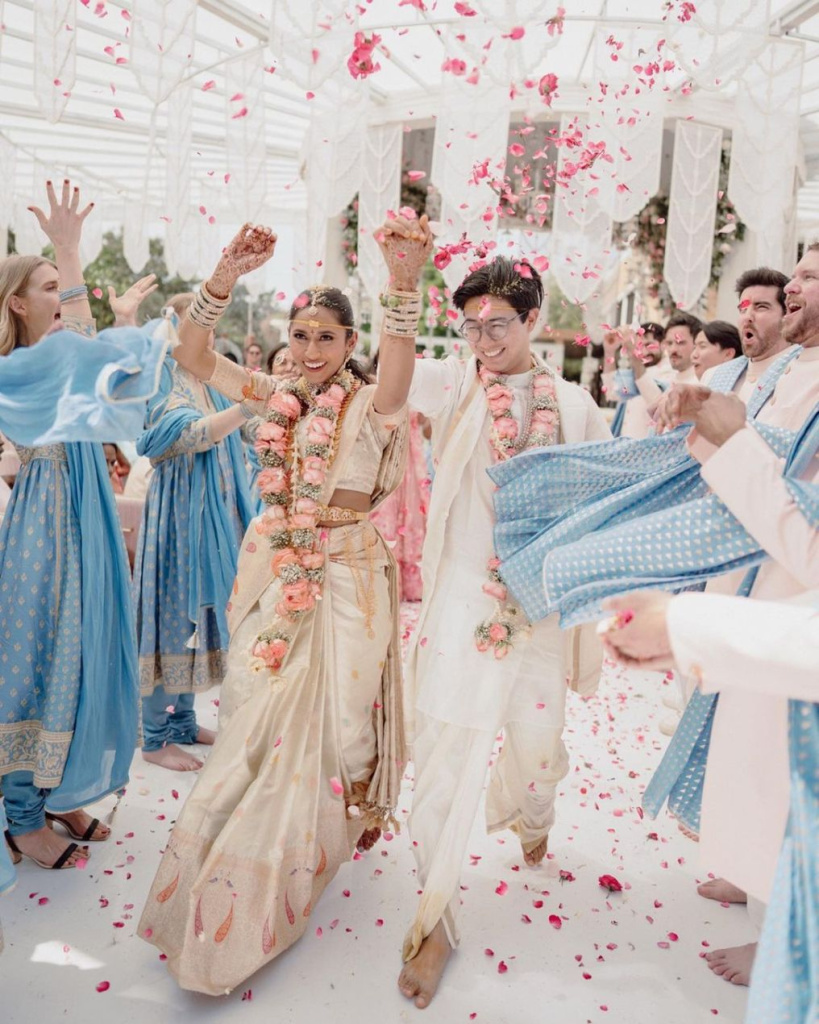
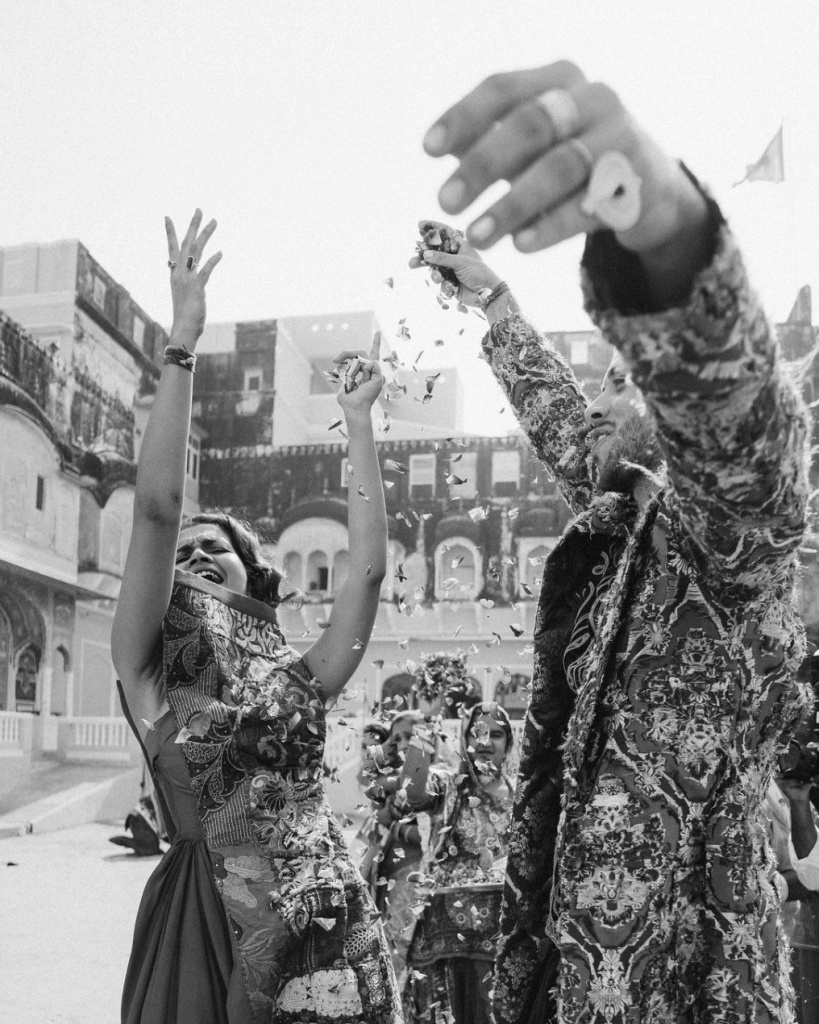
Hindu weddings are renowned for their vibrant rituals, age-old traditions, and a joyous spirit that weaves families and friends together. Each event has its own cultural significance, steeped in history and symbolism. Below is a comprehensive rundown of the core ceremonies that shape the colorful tapestry of a Hindu traditional wedding.
Roka / Engagement
Often regarded as the official start to the wedding festivities, the Roka (or engagement) ceremony is where the families formally announce the union. Gifts, blessings, and sweets are exchanged, creating a festive ambiance. This event sets the tone for the upcoming celebrations, as both sides begin to merge into one extended family.
Mehendi
Arguably one of the most fun-filled pre-wedding gatherings, the Mehendi ceremony involves adorning the Hindu wedding bride’s (and often the female guests’) hands and feet with intricate henna designs. Music, dance, and plenty of laughter accompany the application of mehendi. Tradition holds that the darker the henna stain, the deeper the groom’s love will be—or the more the in-laws will adore the bride!
Sangeet
A high-energy evening dedicated to music and dance, the Sangeet is all about celebrating love with Bollywood beats, choreographed family dances, and lively performances. It’s a chance for both families to bond over shared laughter, friendly dance-offs, and even some playful banter about the couple’s future together.
Haldi
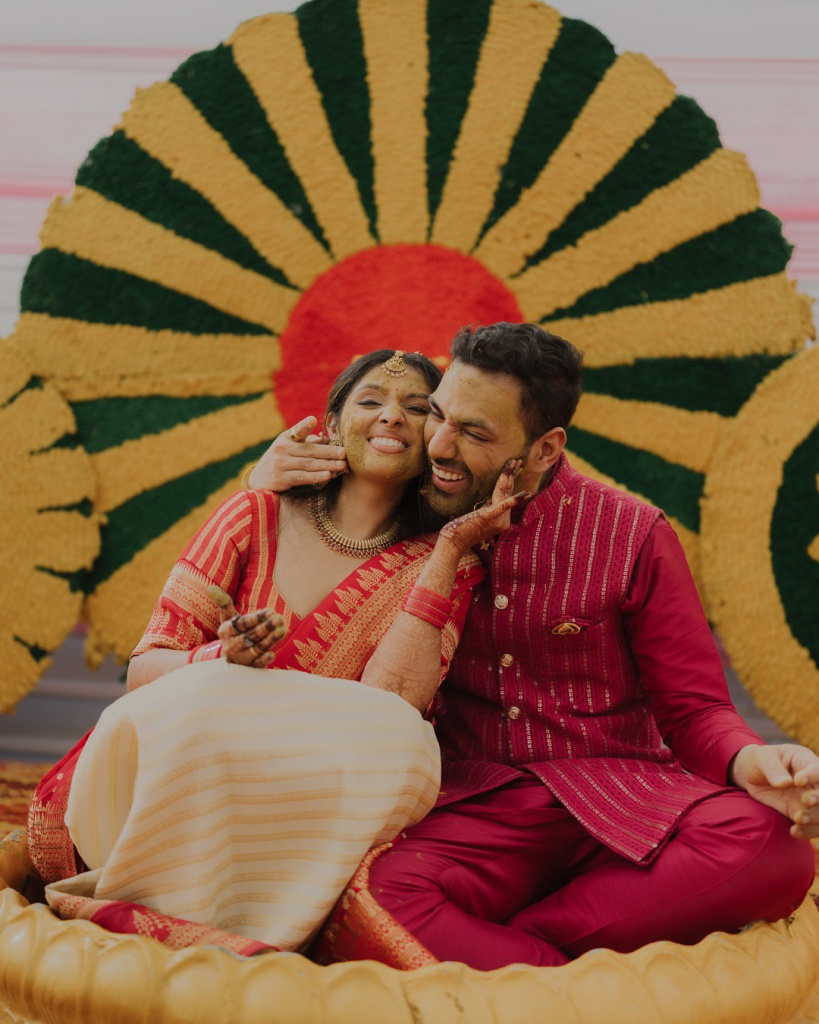
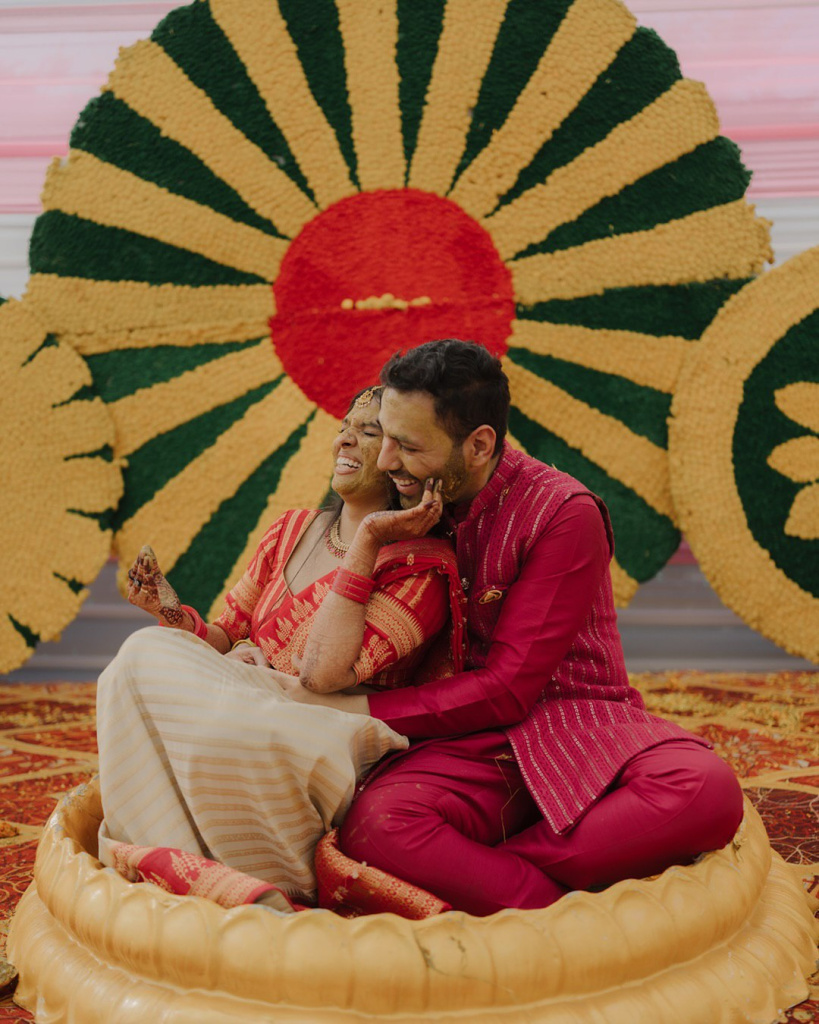
Also known as Pithi or Ubtan in some regions, the Haldi ceremony sees a turmeric paste—often mixed with sandalwood and rose water—applied to the bride and groom. Turmeric is believed to ward off negative energy and bless the couple with glowing skin for their big day. This ritual can get delightfully messy as friends and family smear the couple with turmeric (and each other!), sparking joy and camaraderie.
Ganesh Pooja (Optional but Common)
Many Hindu families conduct a Ganesh Pooja before the wedding ceremonies begin in earnest, invoking Lord Ganesha (the remover of obstacles) to ensure a smooth, blessed journey for the couple. Although not mandatory in every tradition, it’s considered highly auspicious and sets a spiritual foundation for the impending nuptials.
The Wedding Day: The Ultimate Union of Two Souls
The long-awaited pinnacle of all the pre-wedding festivities, the wedding day is when the bride and groom finally say “I do” in the most colorful, traditional, and heartfelt way. It’s a day filled with grand processions, spirited music, sacred vows, and emotional moments that seal the union of two families. Here, the couple performs time-honored ceremonies that represent fidelity, mutual respect, and the promise of a lifelong partnership.
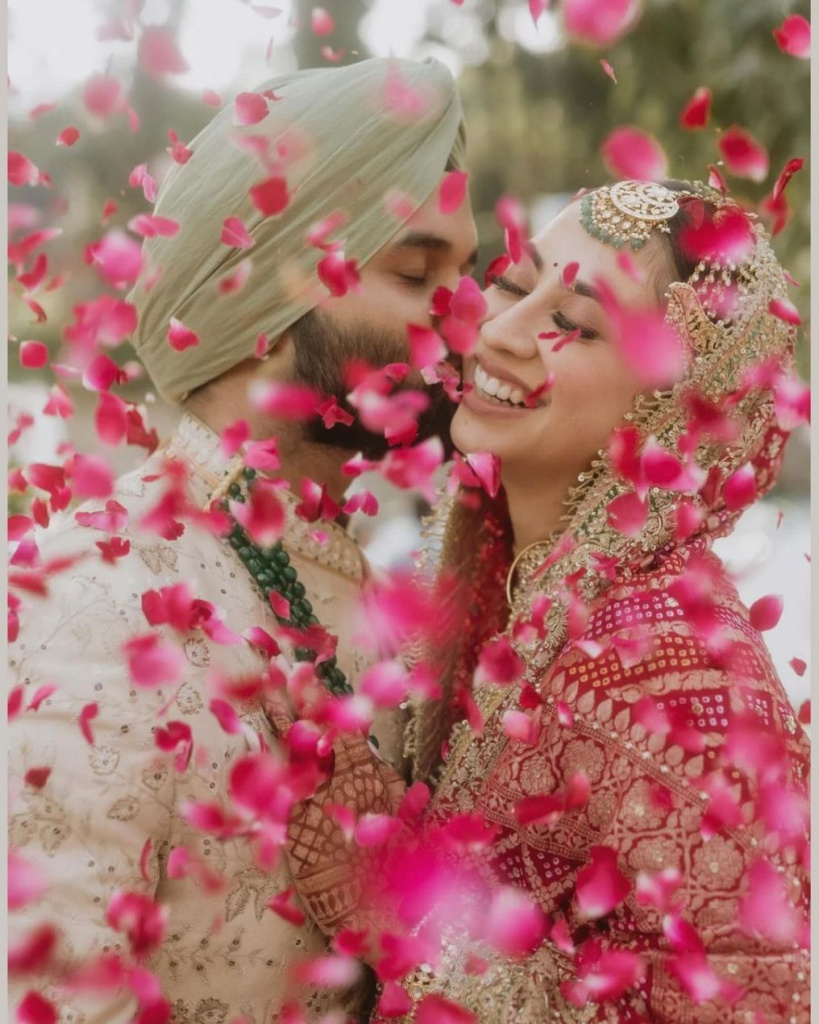
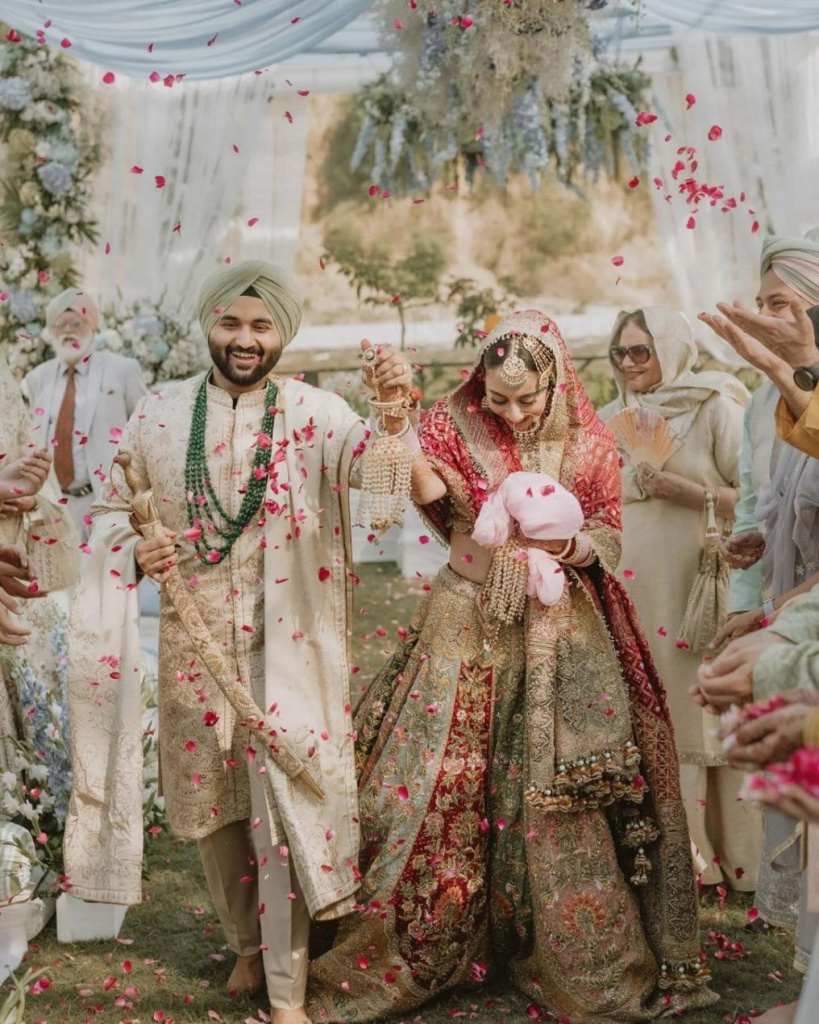
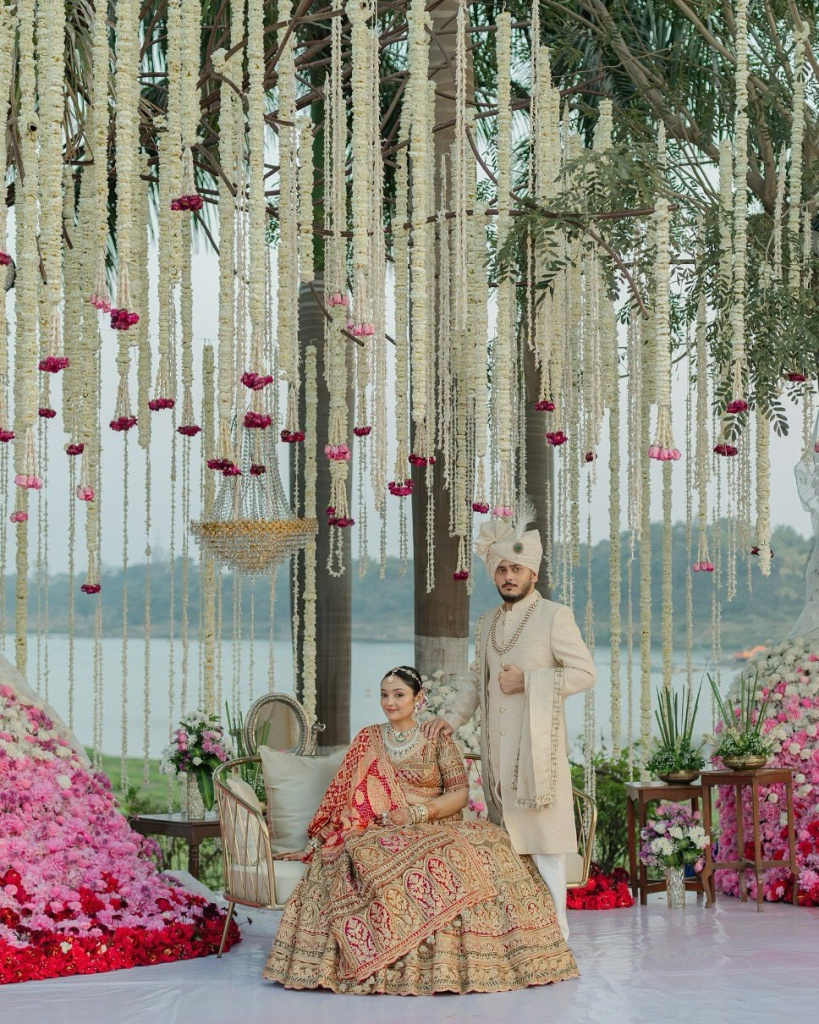
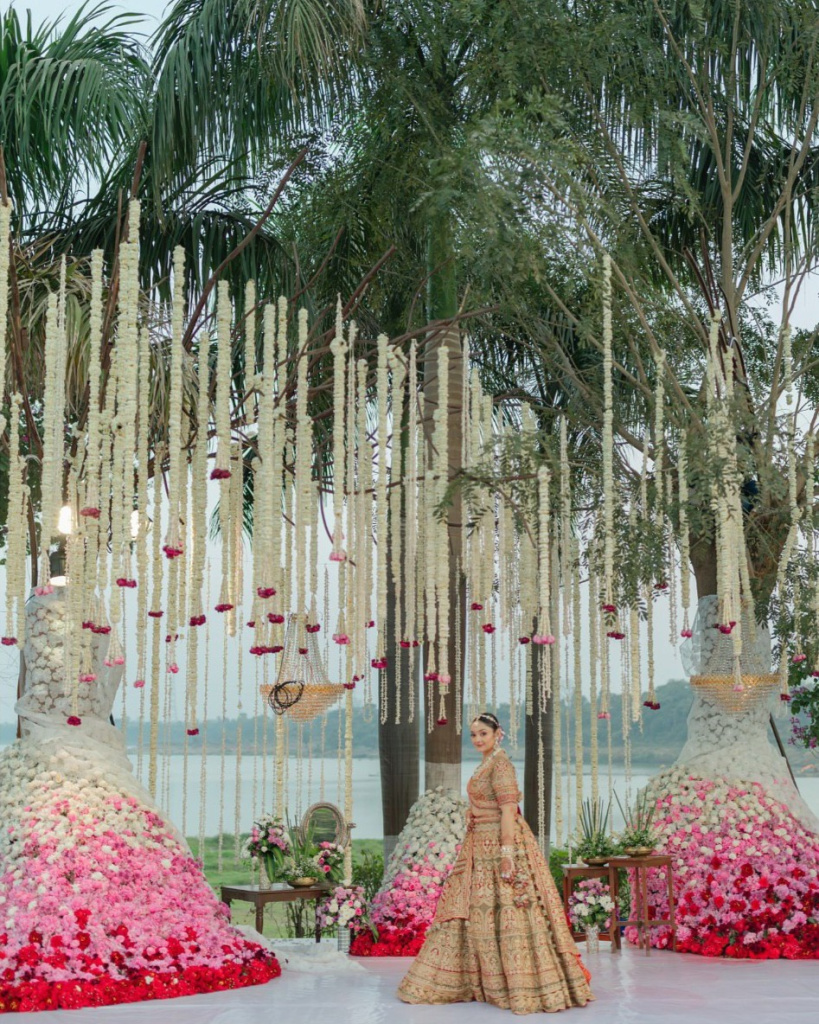
Indian Wedding Baraat (The Groom’s Procession)
The groom arrives in style—often on a horse or in a decorated car—accompanied by his dancing entourage of friends and family. Drums (dhol) and music fill the air, turning the procession into a mini-parade of excitement that literally announces, “The groom has arrived!”
Jaimala (Varmala)
Once the groom is welcomed at the venue (commonly by the bride’s family), the couple exchanges flower garlands in a playful moment signifying acceptance of one another. This is often accompanied by spirited teasing from both sides as the bride or groom is lifted by friends to keep them out of reach.
Kanyadaan
A poignant and deeply emotional ceremony, Kanyadaan sees the bride’s father or parents placing her hand in the groom’s, symbolically entrusting her well-being to him. It represents the bride’s transition from her paternal home to a new chapter with her spouse.
Mangalphere / Saptapadi
The heart of the Hindu wedding ritual: The couple circles the sacred fire seven times (or takes seven steps), with each step representing a promise or vow—ranging from mutual respect to ensuring each other’s happiness and well-being.
Sindoor & Mangalsutra
In many North Indian traditions, the groom applies sindoor (vermilion powder) on the bride’s forehead or hair parting, while in other customs (and across various regions), he ties a mangalsutra (sacred necklace) around her neck. Both acts mark the bride’s new status as a married woman and hold profound cultural significance.
Post-Wedding Ceremonies: Bidding Farewell & Embracing New Beginnings
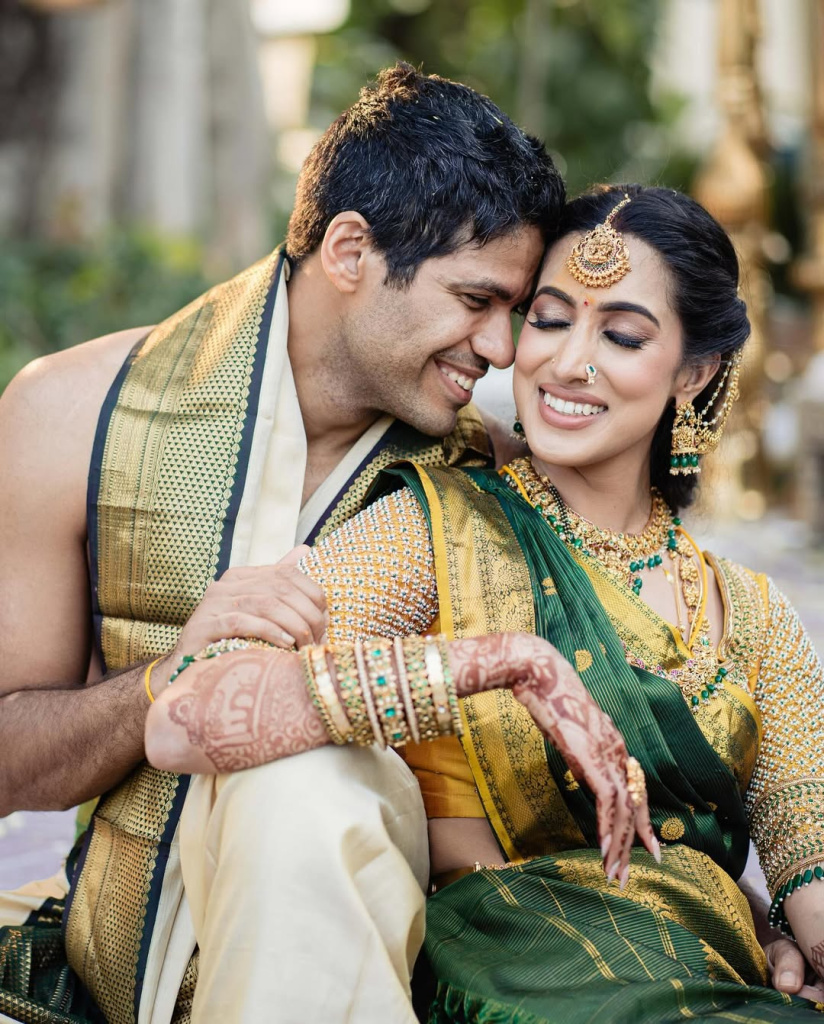
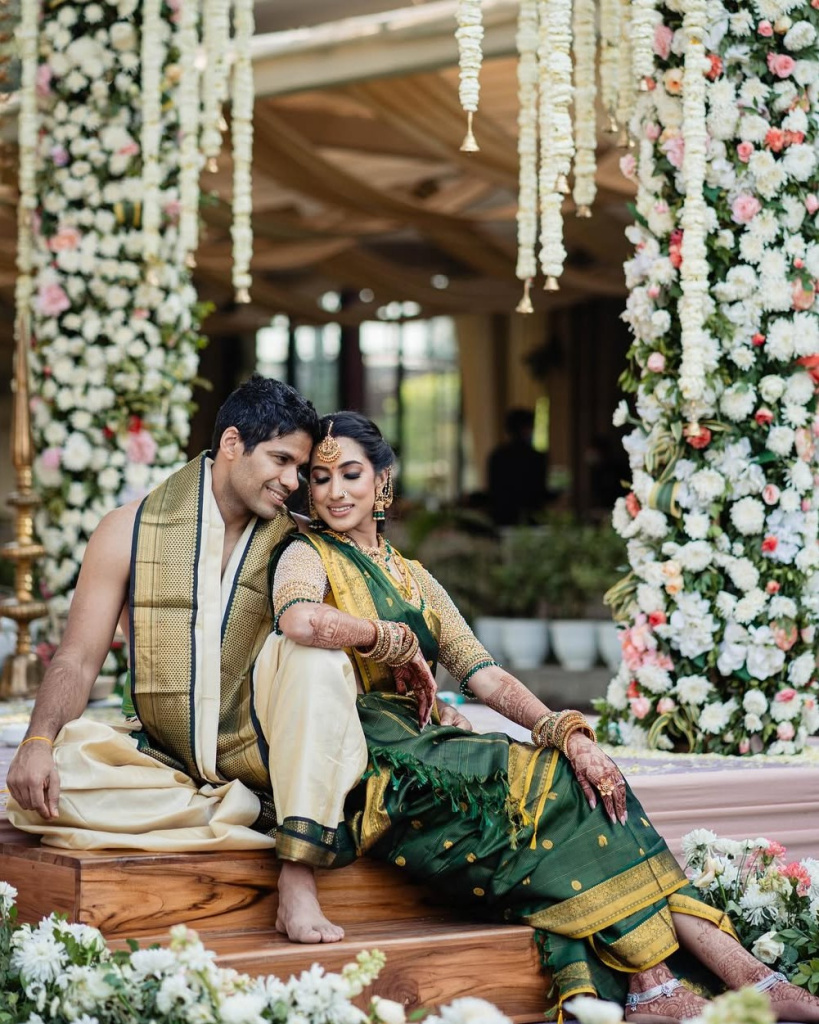
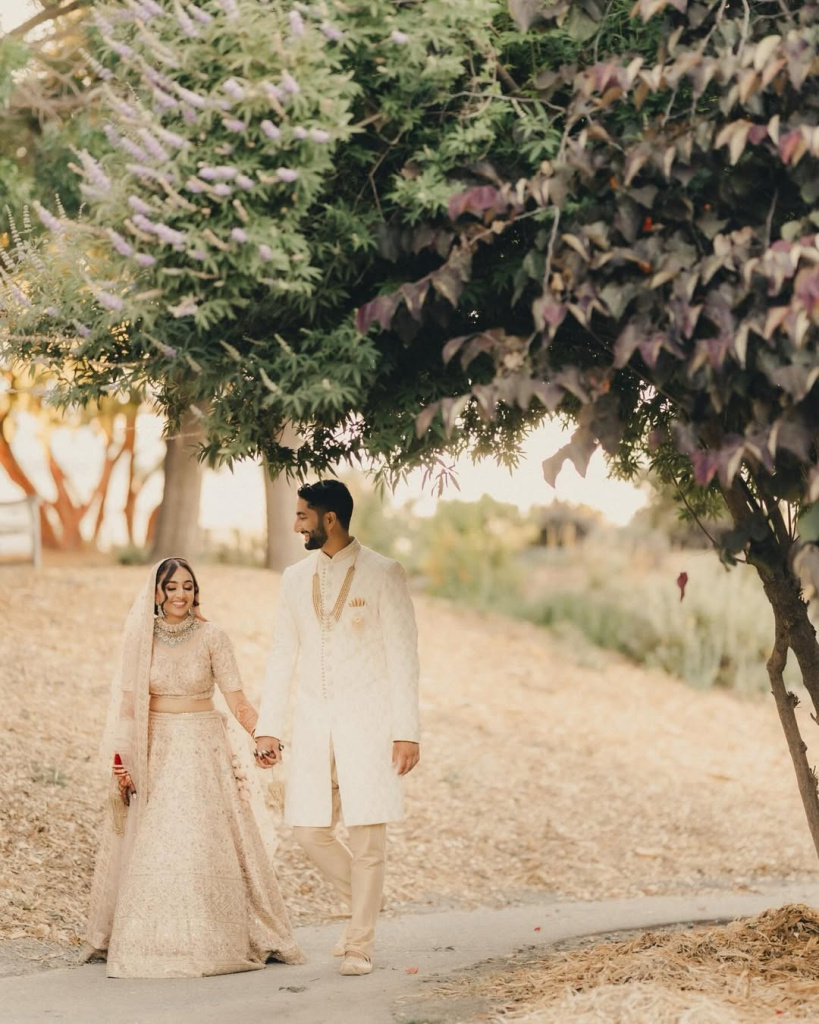
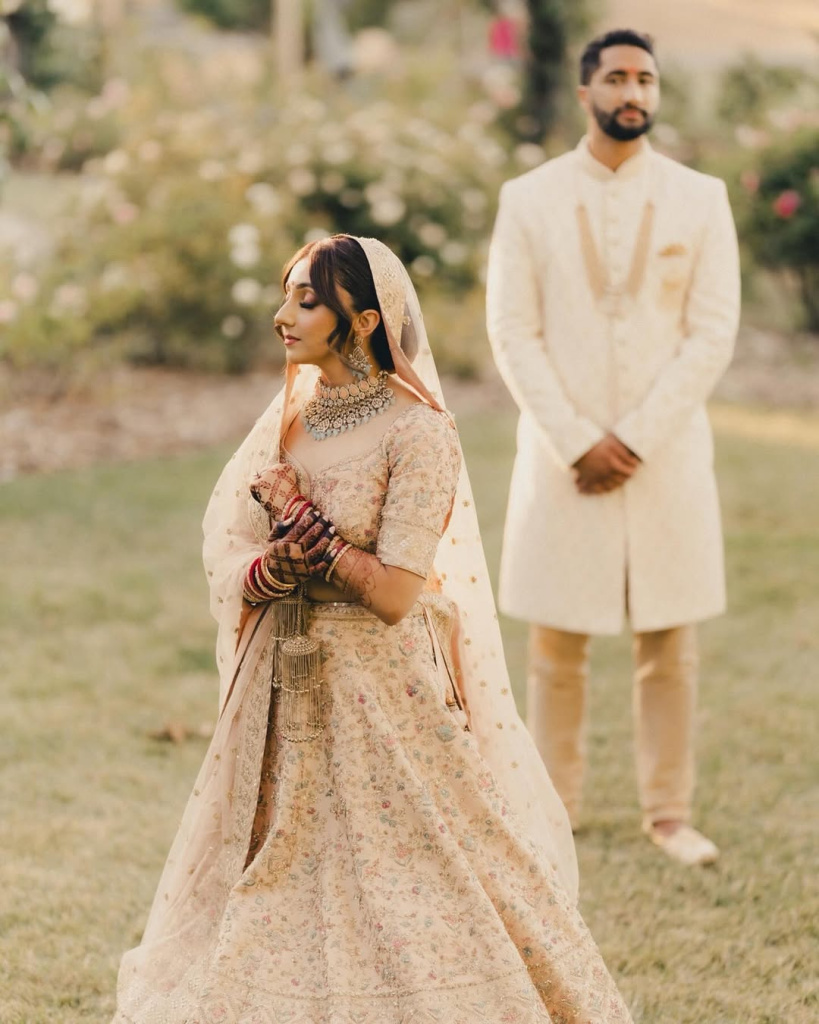
Once the formal vows are exchanged and the couple is pronounced married, the festivities don’t end—they evolve into a new chapter of traditions that honor the bride’s transition into her marital home. These events can be an emotional whirlwind, punctuated by heartfelt goodbyes and grand receptions that introduce the newlyweds to society as husband and wife.
Vidaai (Farewell)
A bittersweet moment where the bride bids farewell to her parents’ home. Emotions run high as she receives blessings and steps into her new life. This ritual underscores the sanctity of marriage and the bond between a daughter and her family.
Griha Pravesh (Welcoming the Bride)
The bride’s first entry into her marital home is marked by various customs, such as gently kicking a rice-filled pot or dipping her feet in colored water before walking into the house. These rituals symbolize prosperity, abundance, and good fortune that the bride brings to her new family.
Reception
Often the final celebration of the wedding marathon, the reception is an opportunity for the newlyweds to greet and entertain extended friends, colleagues, and relatives. While traditions vary, this event usually includes a lavish feast, a grand stage for photos, and plenty of dancing. It’s also a time to let loose and celebrate the couple’s new beginning on a more casual note.
Hindu Wedding Bride and Groom’s Attire
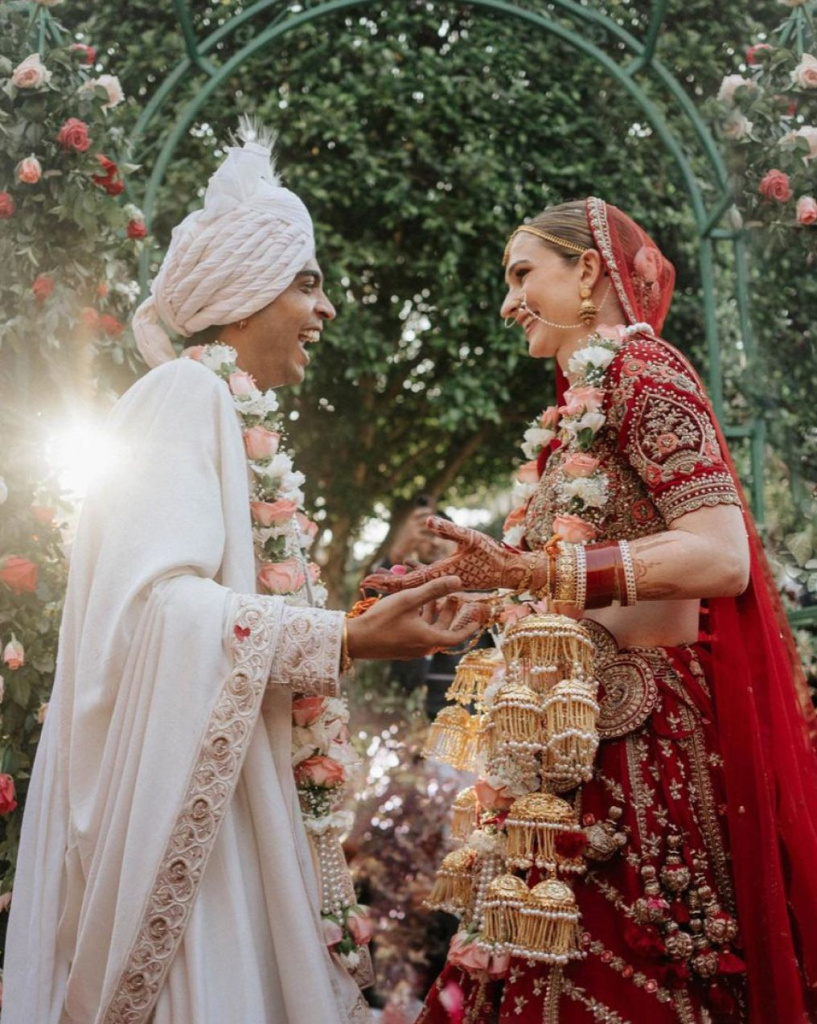
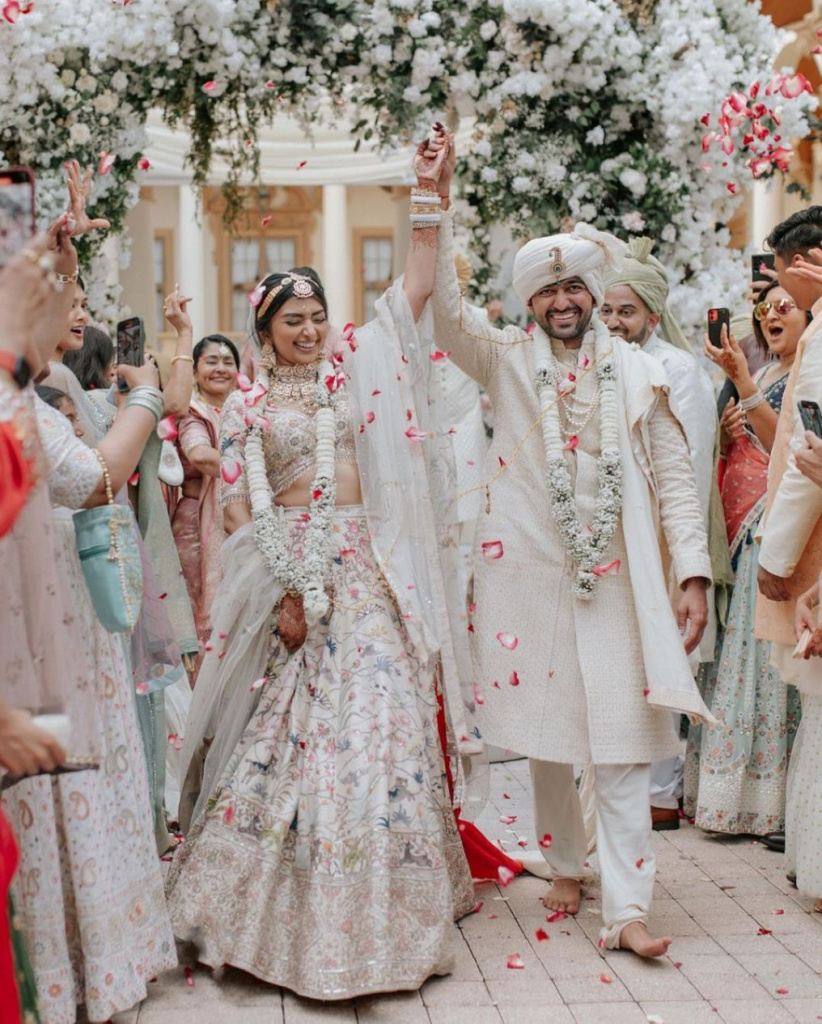
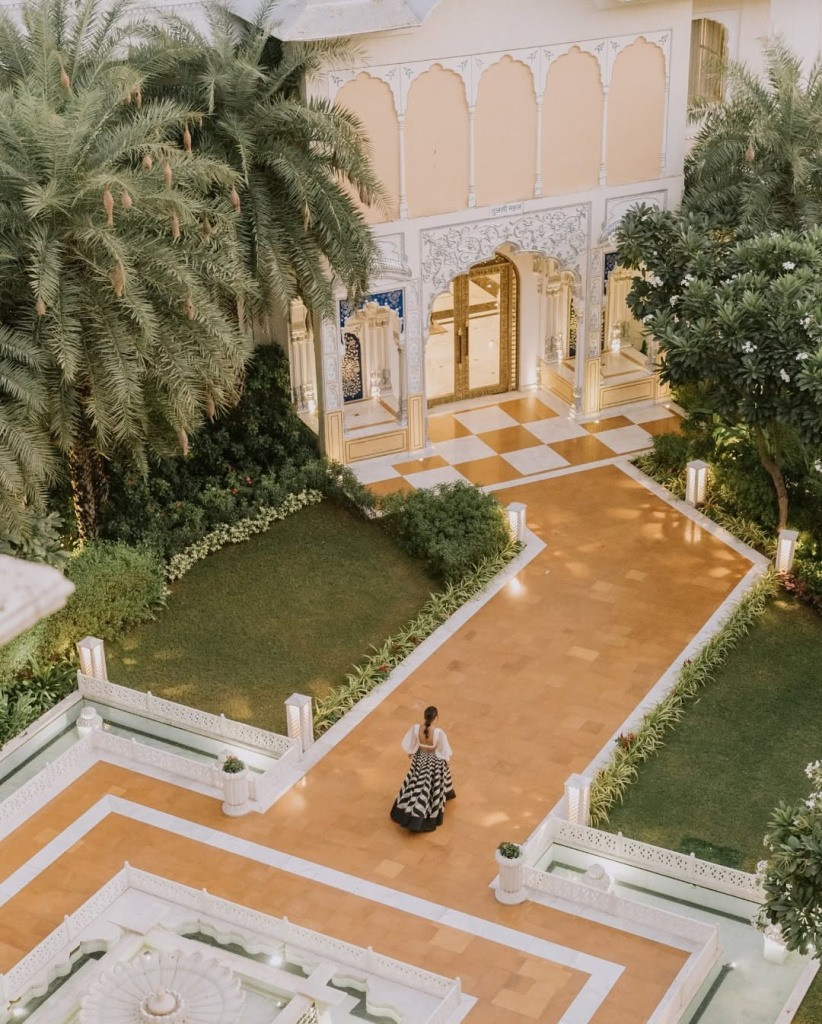
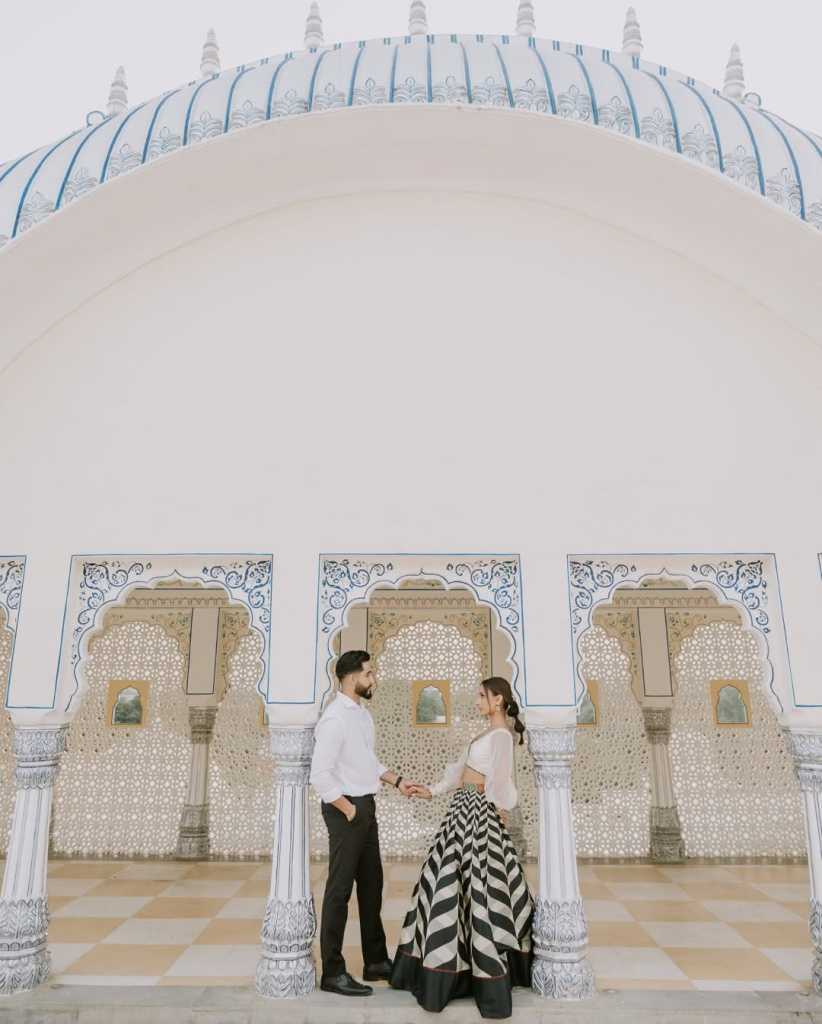
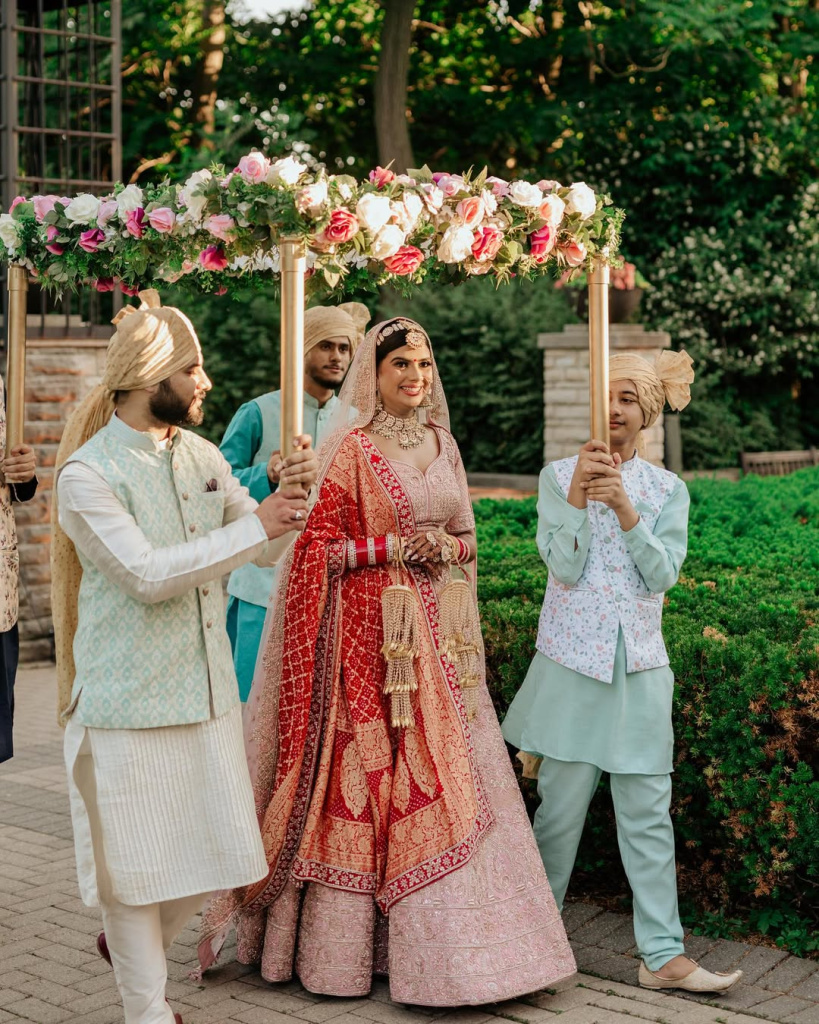
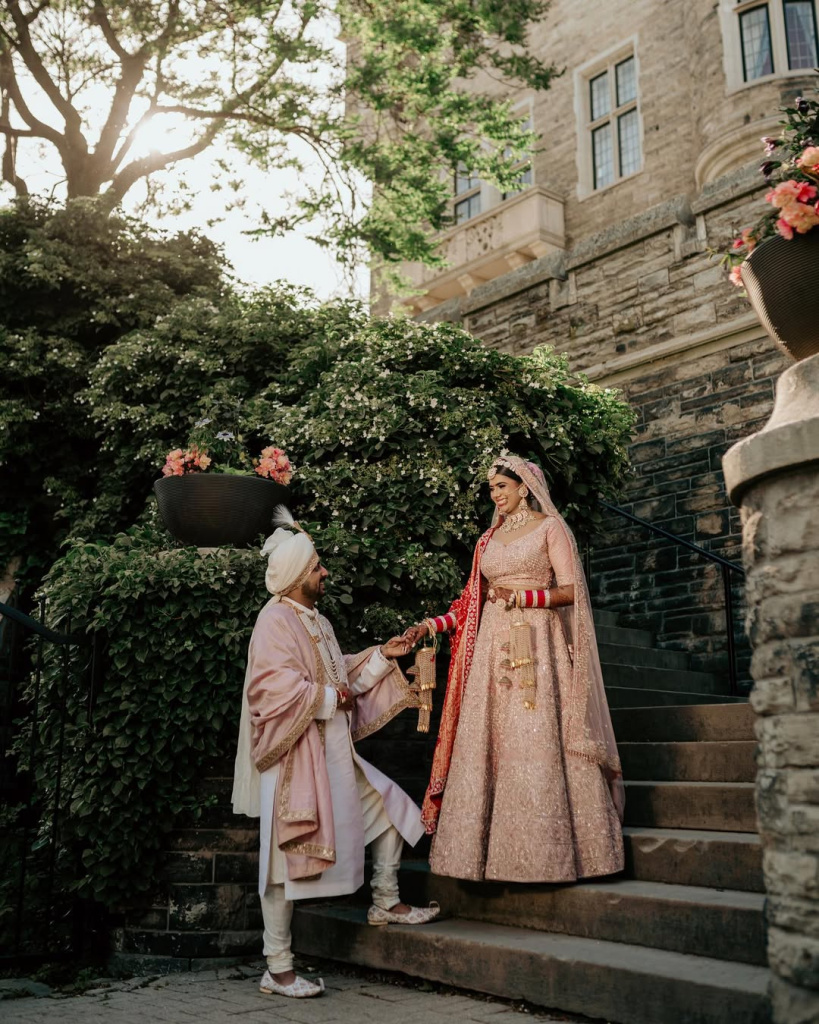
No Hindu wedding is complete without a visual feast of elaborate clothing and sparkling accessories that capture the eye and stir the imagination. From the bride’s dazzling attire to the groom’s regal ensemble, each garment and jewel tells a story—of heritage, devotion, and celebration.
The Bride’s Ensemble
When it comes to the bride’s outfit, tradition and modernity converge in a breathtaking display of color, fabric, and craftsmanship. One of the most iconic choices for North Indian brides is the Hindu wedding lehenga, a lavishly embroidered skirt-and-blouse set often paired with a coordinating dupatta. Traditional hues lean toward red, maroon, or pink—symbolizing love, prosperity, and feminine power—though modern brides now experiment with pastels, golds, and other unconventional shades.
Regional Variations:
- In South India, rich Kanjeevaram silk sarees with broad gold borders often take center stage.
- Bengali brides may opt for intricately woven Banarasi sarees in vibrant reds and golds.
- Maharashtrian brides often don a Paithani saree, known for its peacock and lotus motifs.
No matter the region, each outfit is meticulously designed to stand out under the glowing mandap lights, photographs, and admiring gazes of guests.
The Groom’s Regal Wardrobe
Grooms, too, step up their fashion game, reflecting the grandeur of the occasion:
- Sherwani & Churidar: A beautifully embroidered sherwani (long coat) paired with fitted churidar pants is a popular choice. Fabrics like silk, brocade, and velvet add a royal touch, often embellished with intricate zari or threadwork.
- Bandhgala & Kurta: Some grooms prefer a bandhgala (closed-neck coat) for a sharper, more contemporary look. Meanwhile, a classic kurta-pyjama set can be elevated with luxurious fabrics, statement buttons, and subtle embroidery.
- Turbans & Safas: Many North Indian communities expect the groom to wear a turban or safa, often in a color that complements or contrasts the bride’s attire. Brooches and kalgis (turban ornaments) can infuse extra flair.
Essential Bridal Jewelry
Hindu bridal jewelry is not merely for ornamentation—it carries deep cultural and spiritual resonance. Many brides adorn themselves head to toe in gold, diamonds, polki, or kundan sets, symbolizing prosperity and commitment.
- Necklaces & Earrings: From chokers and layered raani haar sets to chandbalis and jhumkas, the jewelry around the neck and ears makes a bold statement. These pieces often match or complement the embroidery on the wedding attire.
- Bangles & Bracelets: Bangles (kangan or chooda) hold a special place in many Hindu wedding customs. In some regions, the bride wears specific colors or designs believed to bring good fortune and success to her marriage.
- Maang Tikka & Other Headgear: Worn at the parting of the hair, a maang tikka is among the most recognizable pieces of Indian bridal jewelry. Adorned with precious stones or pearls, it frames the face and symbolizes the bride’s divine feminine energy.
- Nath (Nose Ring): A quintessential Indian bridal piece that symbolizes marital status and traditional values. Styles range from delicate loops to elaborate rings connected by chains to the hair or ear.
The Hindu Wedding Headpiece & Other Adornments
While every jewelry piece is significant, a bride’s head accessories hold their own special charm. In many cultures, brides complete their look with a Hindu wedding headpiece, such as a matha patti or a maang tikka that spans the forehead. This piece can be encrusted with jewels, pearls, or semi-precious stones and is often coordinated with the design and colors of the wedding attire.
The dupatta draped over the bride’s head serves both religious and aesthetic purposes. In some traditions, the bride wears two dupattas: one matching her lehenga and another—lighter and contrasting—placed over her head for the wedding ritual.
The Importance of Hindu Wedding Adornment
From sindoor and mangalsutra to payals (anklets) and toe rings, the journey from bride to wife is marked by layers of Hindu wedding adornment. Each item a bride wears is steeped in centuries of cultural heritage:
- Sindoor & Mangalsutra: Applying vermilion (sindoor) and tying the mangalsutra are key rituals that signify the bride’s transition into married life. They also serve as daily reminders of her wedded status and the vows exchanged during the wedding ceremony.
- Payals & Toe Rings: In many regions, anklets (payals) and toe rings (bichiya) are worn by the bride as symbols of good luck and her new role as a married woman.
- Hair Accessories & Flowers: Fresh flowers, such as jasmine or rose petals, are commonly woven into braids or buns, especially in South Indian weddings. These not only look ethereal but also diffuse a fragrant aroma all around.

India Wedding Culture: Food & Feasting
In a Hindu wedding, food isn’t just sustenance—it’s a grand statement of hospitality, culture, and celebration. Lavish spreads, delightful aromas, and the timeless act of “breaking bread” together foster a warm sense of community among guests.
Regional Specialties: A Culinary Kaleidoscope
India’s diverse geography and cultural tapestry mean each wedding menu is a blend of tradition and local flavor.
North Indian Feasts
Often feature creamy curries like butter chicken or paneer makhani, aromatic biryanis, and tandoori delights. Accompaniments include naan, roti, and a variety of chutneys and pickles. Desserts like gulab jamun and jalebi end the feast on a sweet note.
South Indian Delicacies
Expect fluffy idlis, crisp dosas, tangy sambars, and coconut-based chutneys. Weddings in Kerala might showcase appam with stew, while Andhra celebrations could include spicier curries. Served traditionally on banana leaves, these meals reflect a love for fresh produce and earthy flavors.
Eastern India’s Offerings
Home to succulent fish curries (e.g., macher jhol) and a dizzying array of sweets like rasgulla, sandesh, and mishti doi. Many Bengali weddings feature a fish head ceremony (maacher mukh) for prosperity.
Western Indian Fare
In Gujarat and Rajasthan, vegetarian thalis steal the show—think dal-baati-choorma, undhiyu, and an assortment of farsan (snacks). Meanwhile, Maharashtrian menus often include varan bhaat (lentil and rice), puran poli, and a range of pickles and chutneys.
Multiple Courses & Live Stations
A hallmark of modern Indian weddings is the sheer variety offered:
- Buffet & Multiple Stations: Guests can roam among live counters serving everything from chatpata chaat (savory street food) to made-to-order dosas, kebabs, and global cuisines like pasta or dim sum. This allows people to customize their meal according to individual tastes.
- Sit-Down Traditional Meals: In some communities, particularly in the South, an elaborate sit-down lunch or dinner is served on banana leaves, with each course meticulously placed in a specific order. The experience is as much about tradition as it is about taste.
- Fusion Flavors: Younger couples often infuse contemporary twists—like gourmet sliders, sushi bars, or molecular gastronomy—into an otherwise traditional menu, ensuring there’s something memorable for every palate.
Desserts & Sweet Endings
No Indian wedding is complete without an indulgent dessert counter:
- Mithai (Indian Sweets): Ranging from kaju katli (cashew fudge) to motichoor laddoo (sweet gram flour balls), Indian sweets symbolize auspiciousness and celebration. Regional favorites like rasmalai, payasam, or shrikhand are a delightful way to explore the country’s sugary spectrum.
- Western-Inspired Delights: Alongside Indian mithai, you’ll often find a lavish chocolate fountain, cupcakes, pastries, and ice cream sundaes. Many receptions also feature a grand wedding cake-cutting ceremony as a nod to Western traditions.
Beverages & Refreshments
Hydration and refreshment are key in any grand celebration:
- Traditional Drinks: Fresh fruit juices, lassi (yogurt-based drink), jaljeera (spicy cumin-flavored water), and kokum sherbet are popular thirst-quenchers. South Indian weddings may serve filter coffee as a signature beverage.
- Mocktails & Cocktails: In more contemporary setups (where alcohol is permitted), stylish bars serve cocktails and mocktails infused with Indian spices or fruits. Signature cocktails named after the couple are a rising trend, adding a personalized touch.
Vegetarian, Non-Vegetarian, and Dietary Considerations
While many traditional Hindu weddings emphasize vegetarian fare, an increasing number of modern celebrations include a non-vegetarian section, especially in North and East Indian communities.
Hindu Wedding Ideas: Décor, Themes & Trends
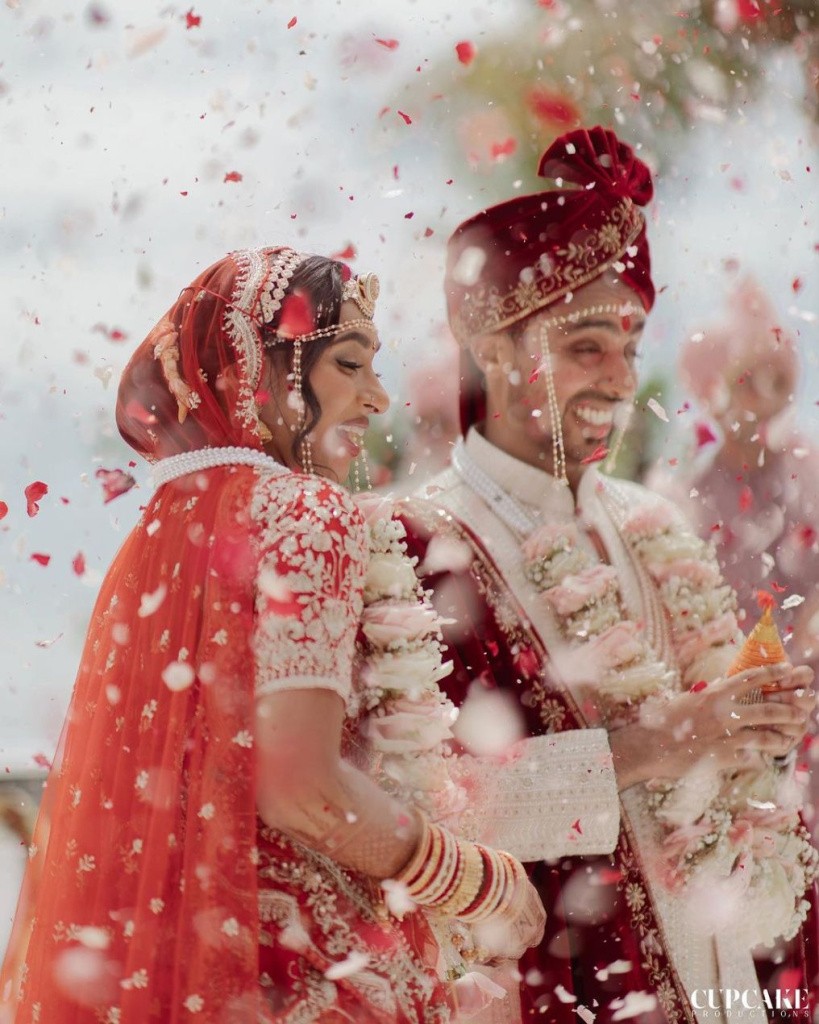
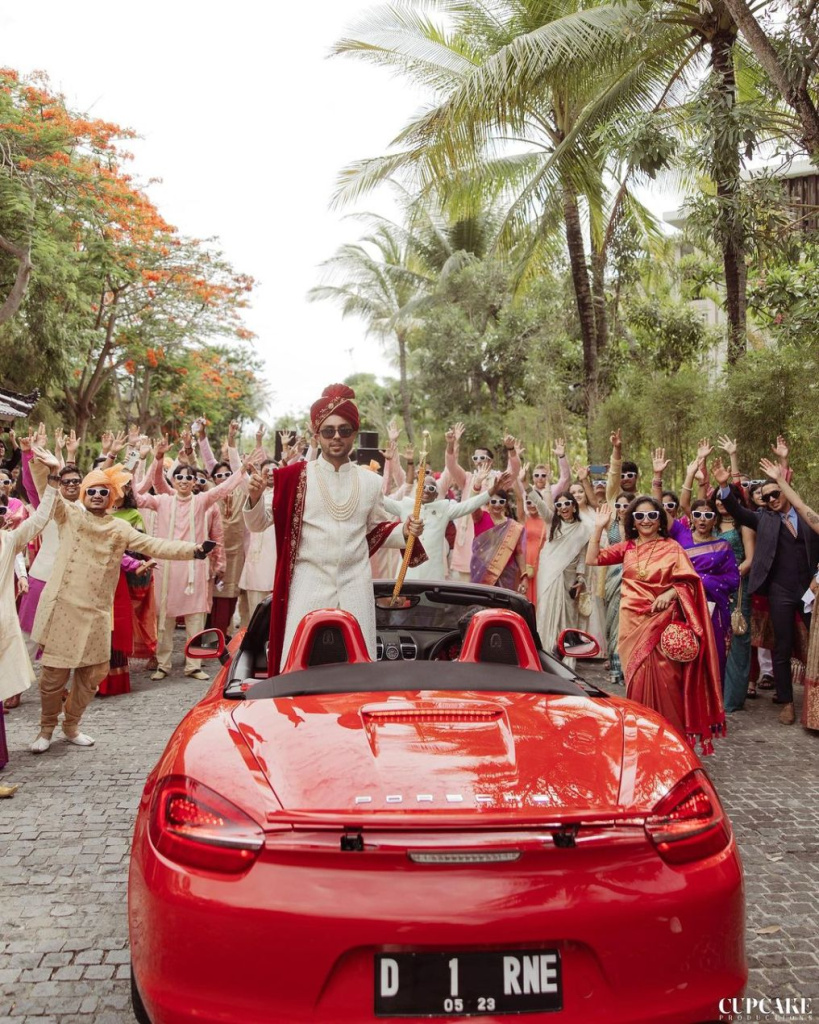
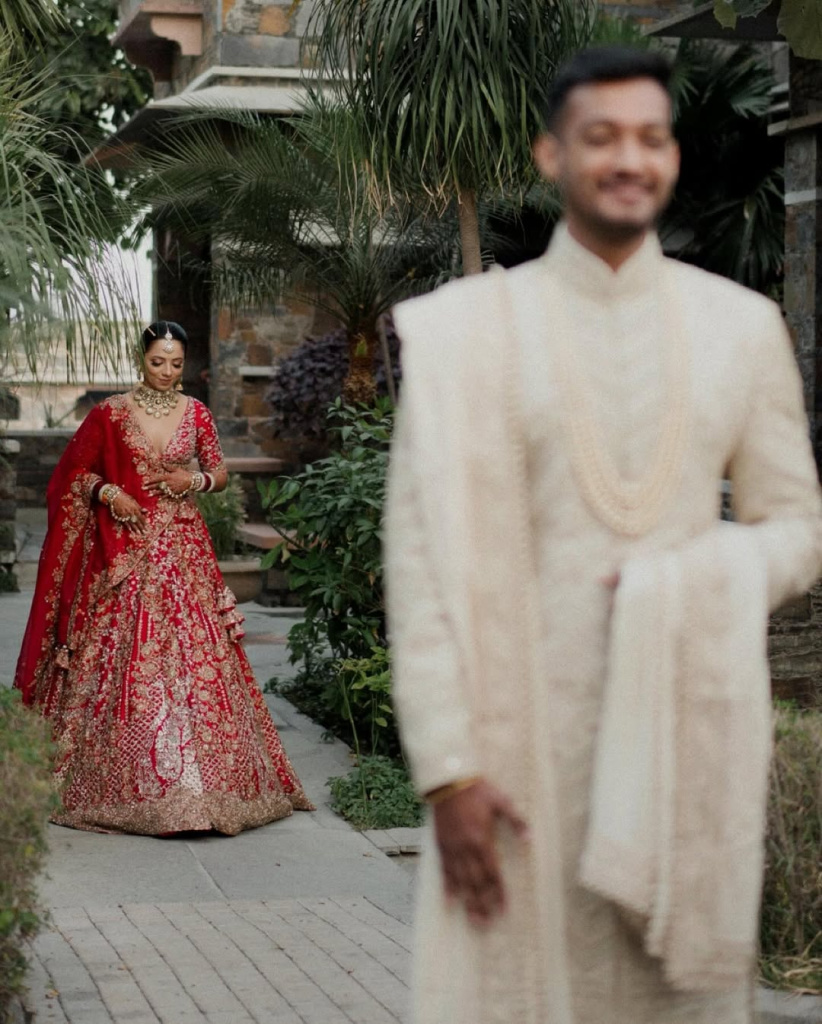
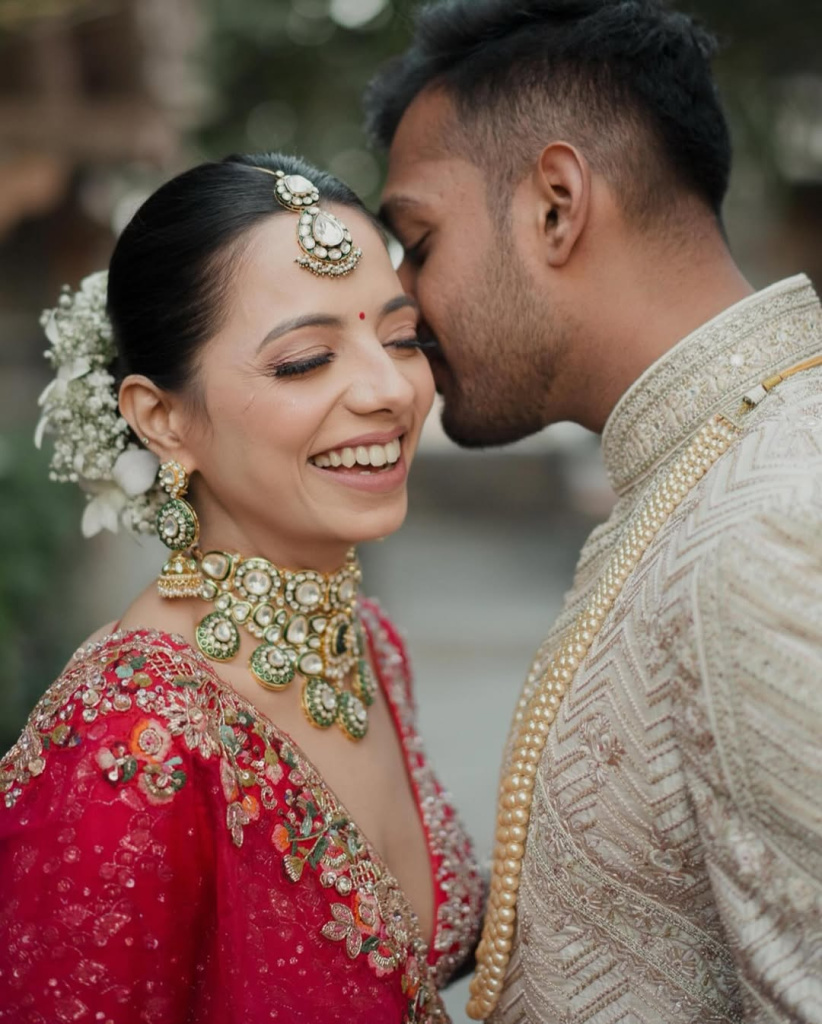
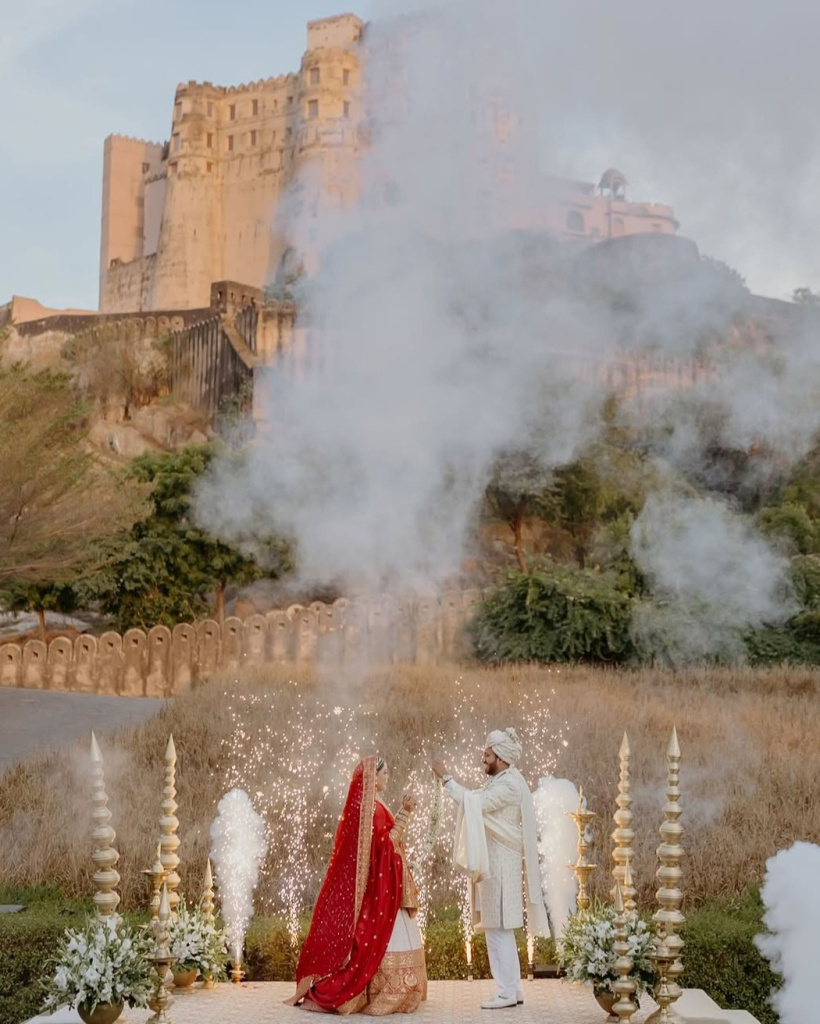
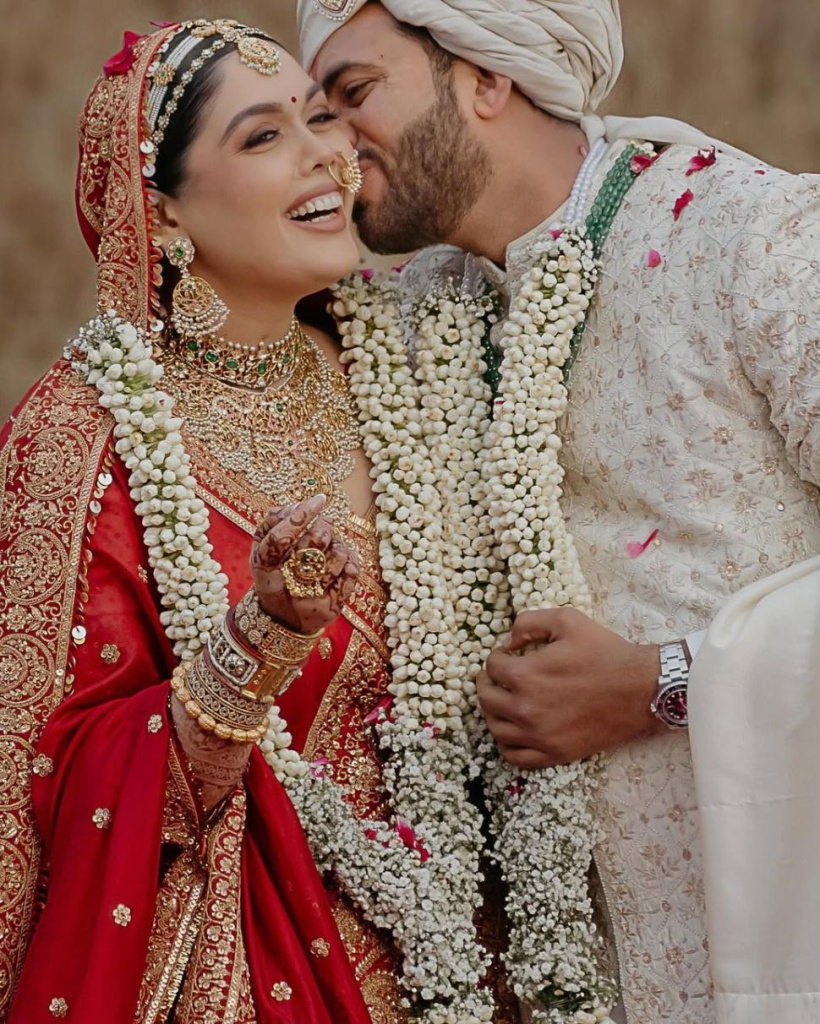
A Hindu wedding is often a celebration of epic proportions—days (sometimes even weeks) of festivities that fuse age-old traditions with modern flair. Over the years, couples have looked for fresh, creative ways to express their love stories while staying true to cultural values. Below, you’ll find fresh and creative ideas on how to orchestrate a breathtaking wedding that stands out and stays heartfelt.
Themes: Crafting a Signature Style
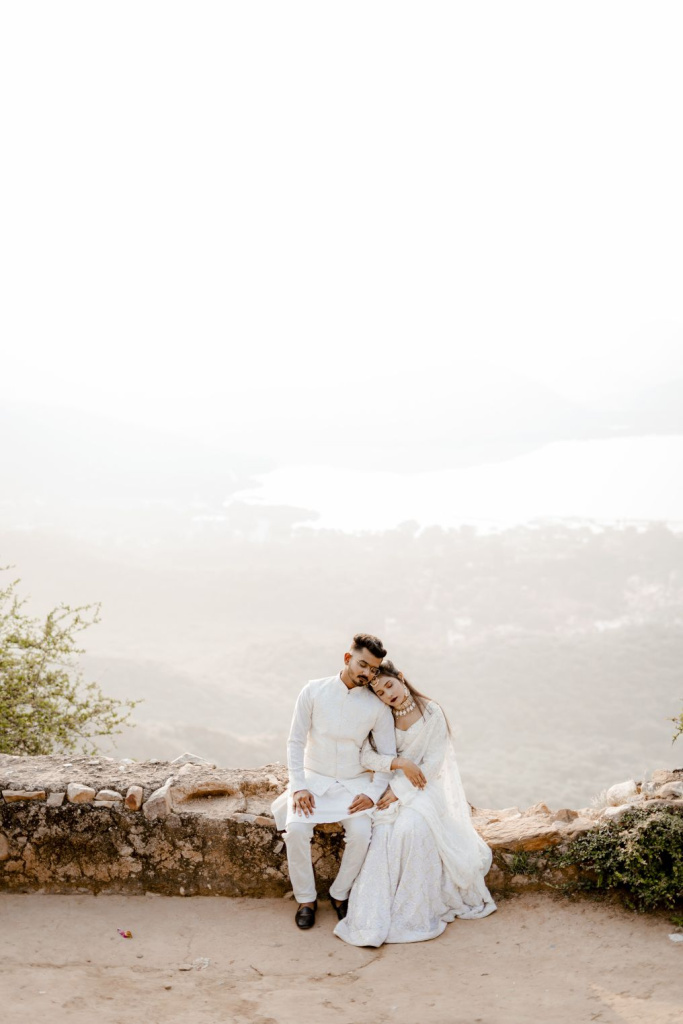
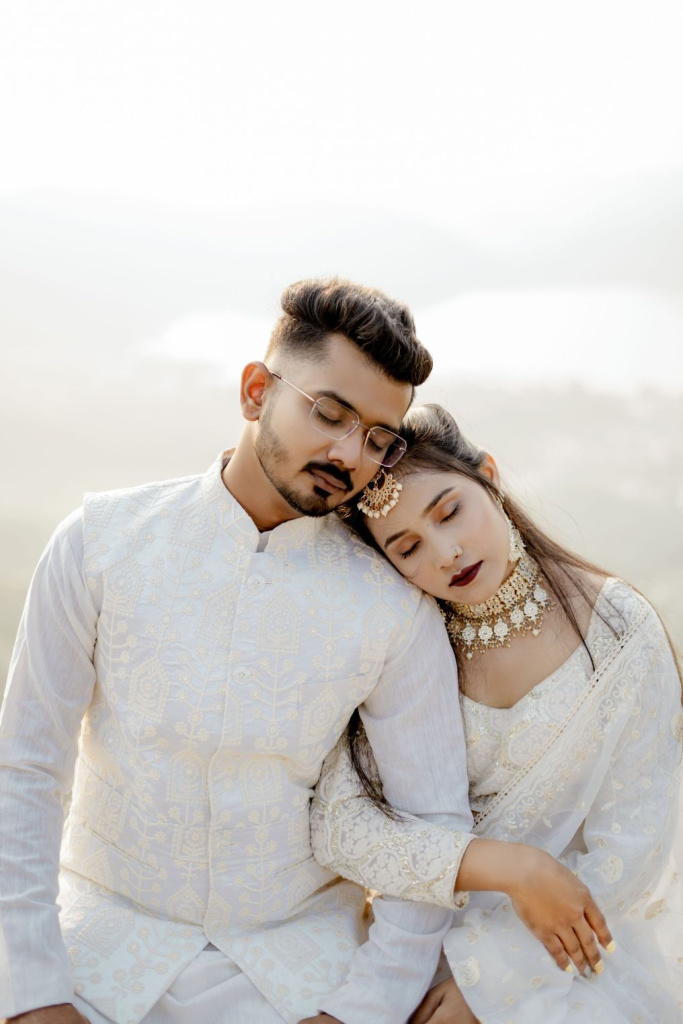
When it comes to a Hindu wedding, the “theme” isn’t just a decorative afterthought—it’s the guiding thread that unifies every event. From the Mehendi to the Reception, a well-chosen theme can highlight the couple’s personalities, family heritage, and shared passions.
- Bollywood Glam: Turn your wedding into a larger-than-life film set. Use iconic movie posters, a red-carpet entry, and choreographed dances to bring that star-studded charm. Perfect for a high-energy Sangeet.
- Vintage Royal: Inspired by Indian palaces and bygone eras, incorporate antique furniture, gilded frames, and regal outfits. A classic choice if you dream of channeling your inner Maharaja or Maharani.
- Bohemian Chic: Ideal for a daytime or outdoor wedding, embrace macramé hangings, pampas grass, and mismatched rugs. Let nature shine through with wildflower arrangements and earthy color palettes.
- Eco-Friendly & Sustainable: Focus on locally sourced flowers, reusable materials like bamboo and jute, and minimal plastic usage. Complement the décor with potted plants that double as guest gifts.
- Fusion Décor: Marry Western aesthetics—such as pastel drapes or a white wedding arch—with Hindu elements like marigolds, diyas, or a traditional mandap. This blend lends a global yet culturally grounded feel.
- Fairy-Tale Garden: Think lush greenery, fairy lights draped over trees, and whimsical touches like moss-covered arches or floral swings. Combine subtle shades of pink, lavender, and sage for a dreamy ambience.
- Carnival of Colors: Go all out with bright hues—turquoise, fuchsia, lime green—seen in drapes, backdrops, and even the bridal attire. Great for couples who aren’t afraid to showcase their vibrant personalities.
Décor: Elevating Every Ritual
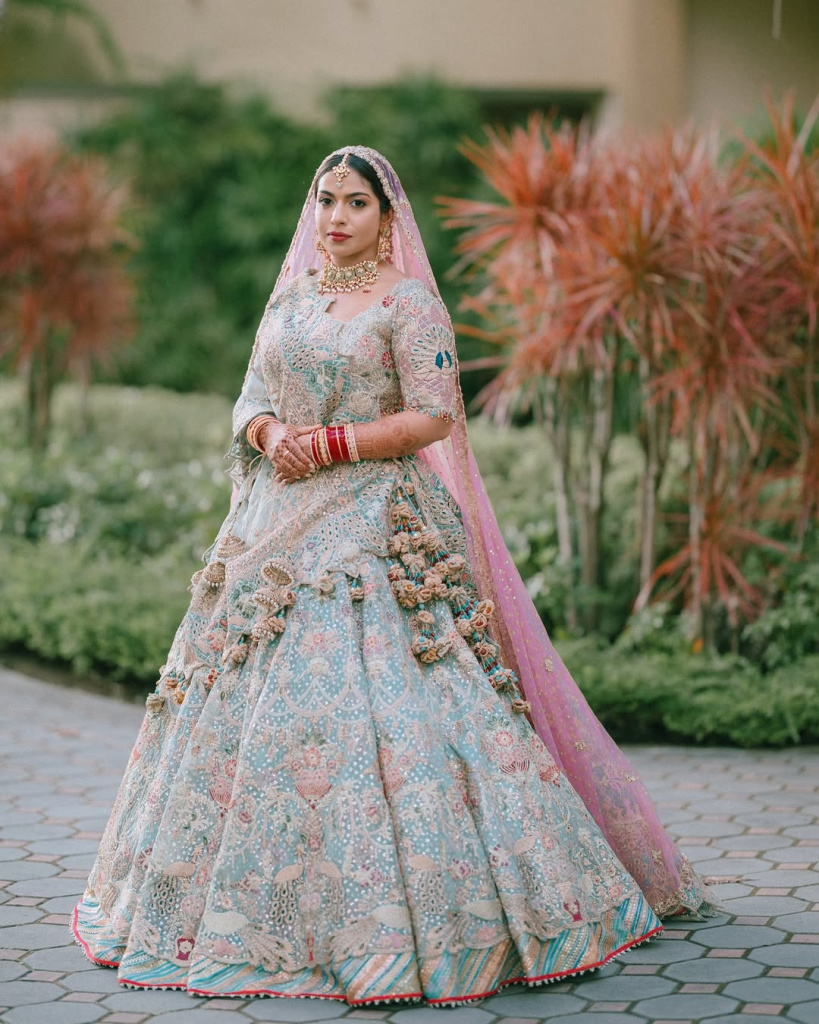
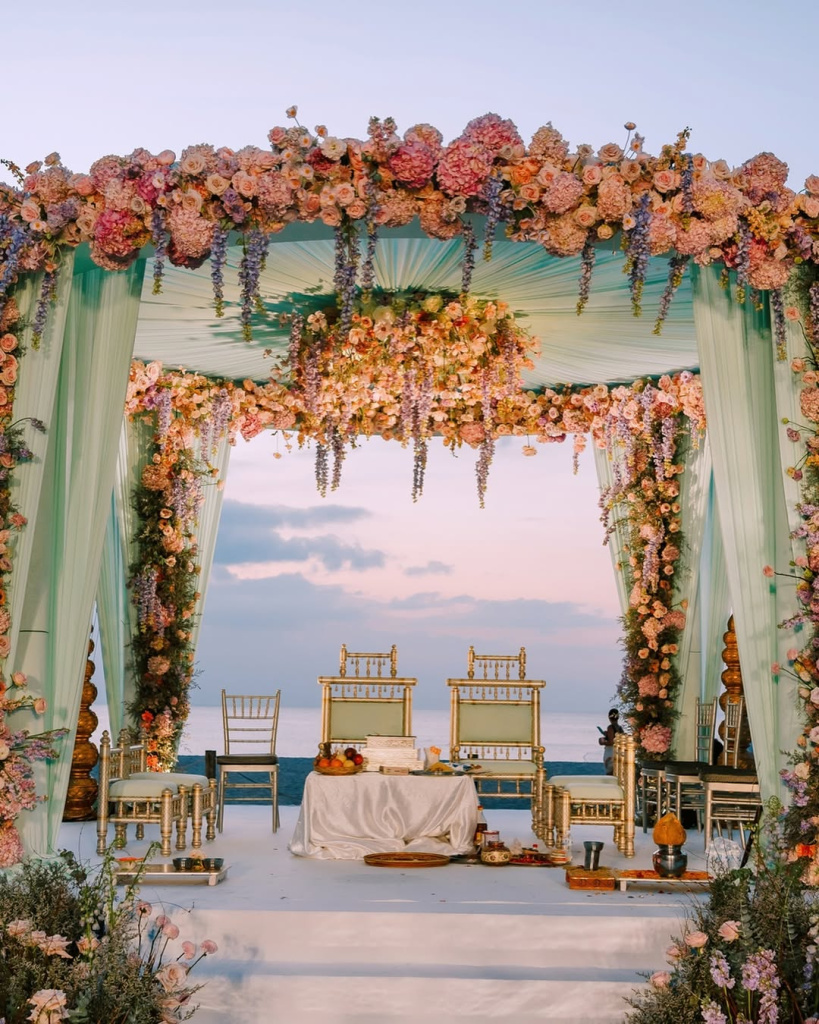
Décor can transform an ordinary venue into a spellbinding realm of color, light, and symbolism. From the sacred mandap to interactive corners for guests, thoughtful design elements enrich the wedding experience and pay homage to the cultural significance of each ritual.
- Mandap Magic: Make the mandap an unforgettable focal point. Classic styles feature marigold garlands and draped fabrics; modern couples might opt for a minimalist acrylic frame with greenery or pampas grass.
- Floral Marvels: Go beyond bouquets and centerpieces—try floral chandeliers, suspended floral installations, or even floral pathways leading to the mandap. Mix marigolds with roses or orchids for layered texture and colors.
- Lighting Extravaganza: Use string lights, lanterns, or fairy-light canopies to create a romantic glow. For night events, mix warm yellow bulbs with colored LED washes to highlight key décor elements.
- Bold Color Palettes: While reds and golds remain classic, experimenting with pastel pinks, mint greens, or deep jewel tones can leave a strong visual impression. Tie it all together through coordinated fabric drapes, table linens, and floral hues.
- Photo Booth & Backdrops: Give guests a fun spot for snaps! Decorate with jharokha (traditional window) frames, neon signs, or color-splashed walls. Keep props handy—think quirky signs, oversized sunglasses, or miniature dhols.
- Statement Entrances: Greet guests with a grand entrance. Decorate tall archways or gates with flowers, lights, or brass vessels. A well-dressed entrance can set the mood for the entire wedding.
- Mehendi Lounge: Add comfortable low-seating arrangements with vibrant cushions, umbrellas, or tassel backdrops. This creates an inviting space for the bride, her friends, and family to relax during the Mehendi festivities.
- Centerpieces with Tradition: Incorporate brass diyas, floating candles in ornate bowls, or mini rangoli designs as table décor. These nods to tradition keep the atmosphere cozy and culturally rich.
Trends: Infusing Modern Flair
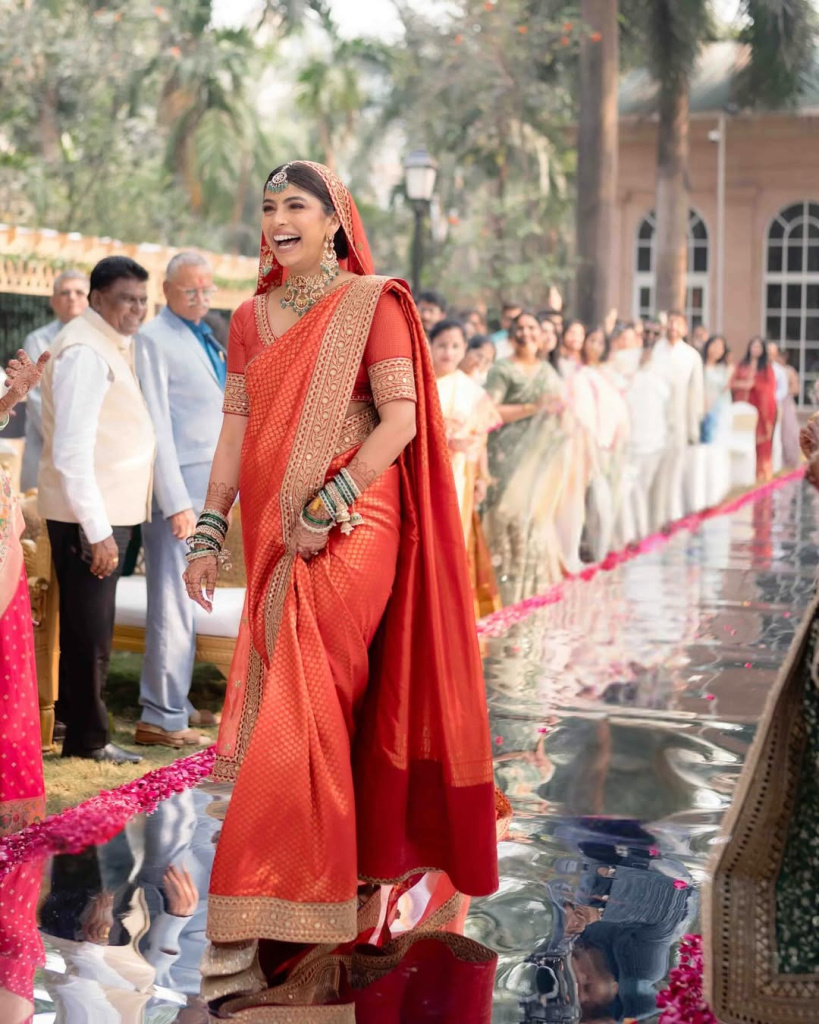
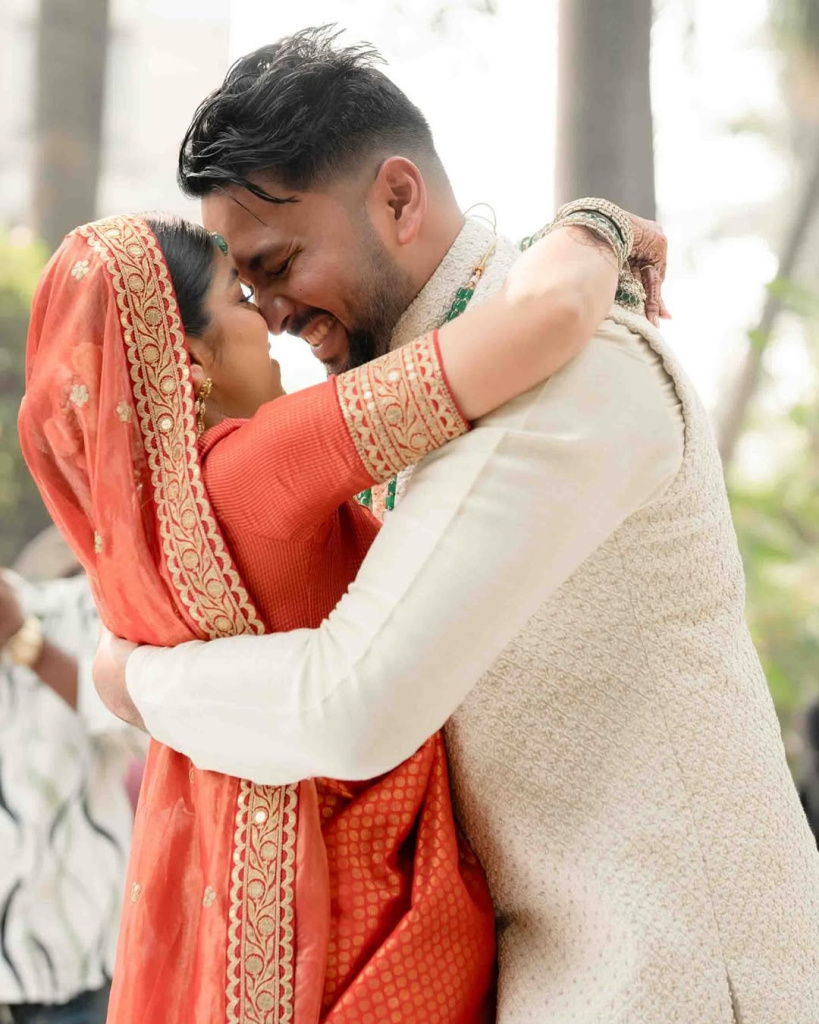
As new generations take center stage, technology and global influences shape how Hindu weddings evolve. From experiential effects to clever guest engagement, these trends keep the festivities fresh, fun, and photogenic.
- Drone Photography & Videography: Capture sweeping aerial shots of the wedding venue, the baraat, and the mandap. This bird’s-eye view adds cinematic drama to your wedding album.
- Projection-Mapping: Transform plain walls into immersive displays—from gently swaying floral patterns to the couple’s love story coming alive in animations. It’s a futuristic way to personalize large surfaces.
- Digital Guestbooks & Apps: Replace pen-and-paper sign-ins with interactive tablets or wedding apps. Guests can record short video wishes or selfies, compiling into a digital memory book that lasts a lifetime.
- Neon Signage & Statement Pieces: Modern couples love adding a pop of neon—perhaps with their wedding hashtag or a playful phrase like “Better Together.” It doubles as an Insta-worthy photo spot.
- Live Stations & Interactive Catering: Food becomes a performance art with live chaat counters, dosa stations, or even molecular gastronomy shows. Couples can also customize signature mocktails or cocktails.
- Eco-Conscious Touches: Sustainability isn’t just a theme—it’s also a trend. Biodegradable confetti, compostable cutlery, or zero-plastic buffets reflect the couple’s environmental ethos.
- Customized Wedding Hashtags: Encourage guests to share photos on social media using a unique hashtag. It becomes a fun, real-time gallery of celebrations, easy for everyone to track and enjoy.
- Experiential Installations: Think giant floral swings, interactive art walls, or illusions that blur the line between décor and entertainment. These wow-factor setups delight guests of all ages.
- Cold Pyro & Special Effects: Add an element of drama during entrances or the couple’s first dance with safe, low-smoke pyrotechnics. It’s a surefire way to steal the spotlight.
- Mini Events & Performances: Surprise guests with a flash mob, stand-up comedy set, or a short cultural performance. Such mini entertainments keep the momentum lively throughout the day.
Indian Hindu Wedding FAQs
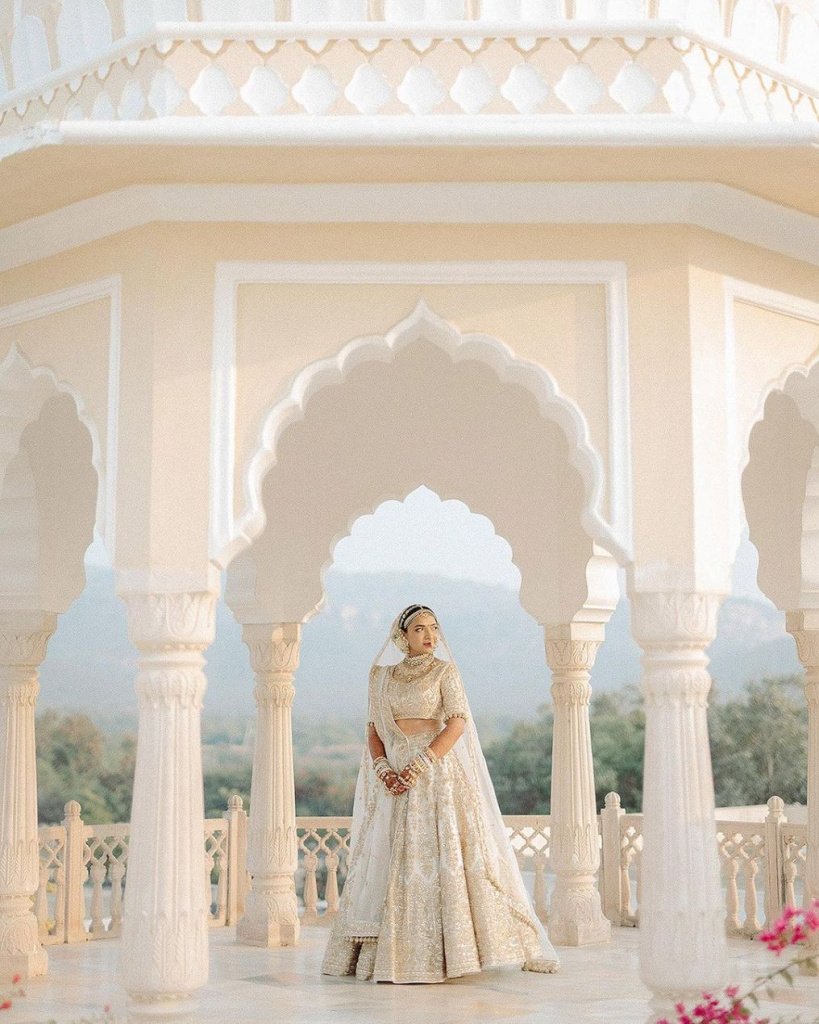
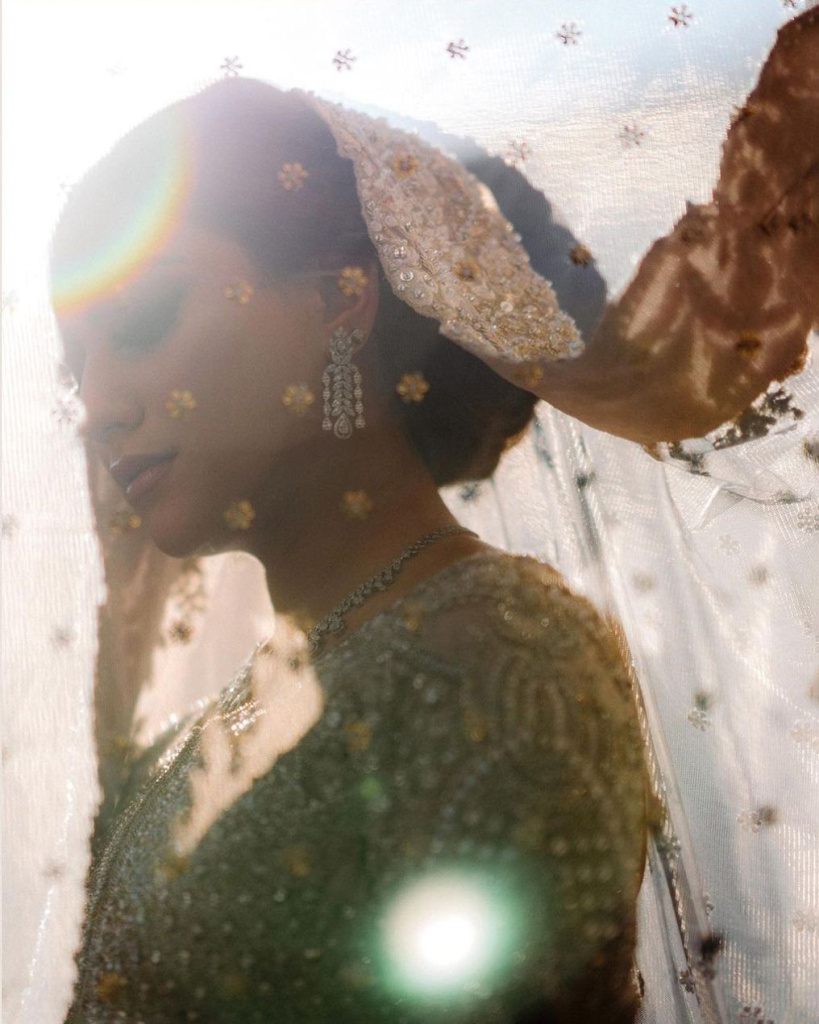
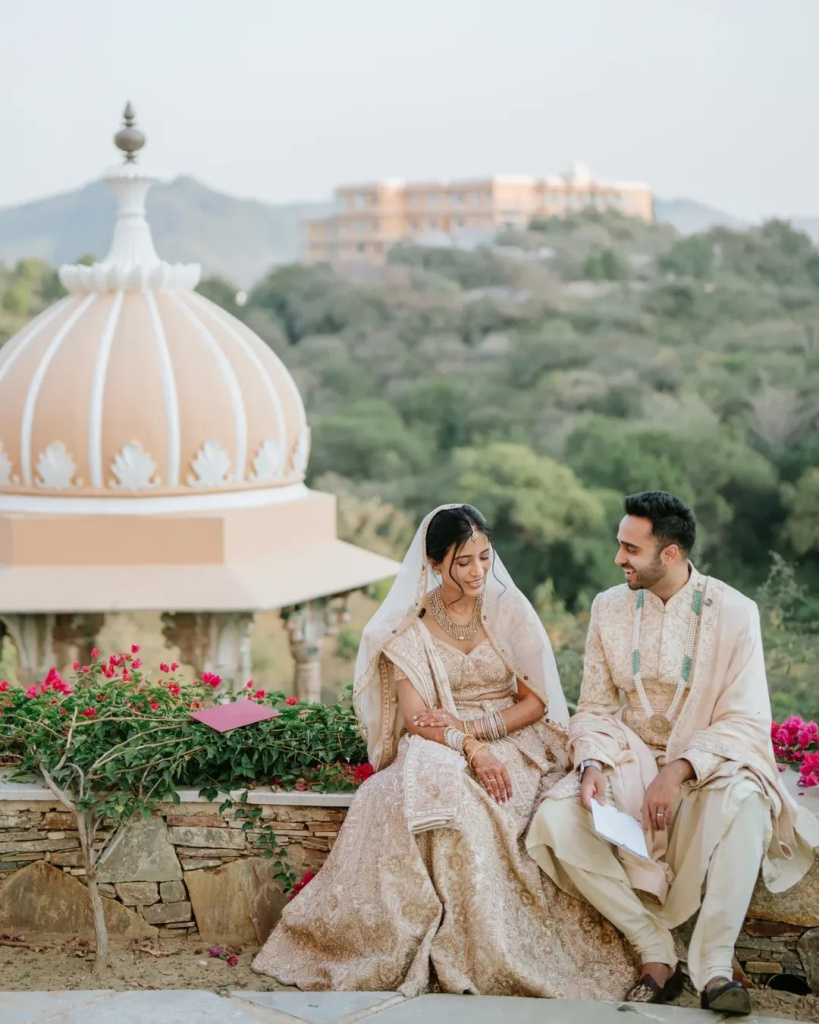
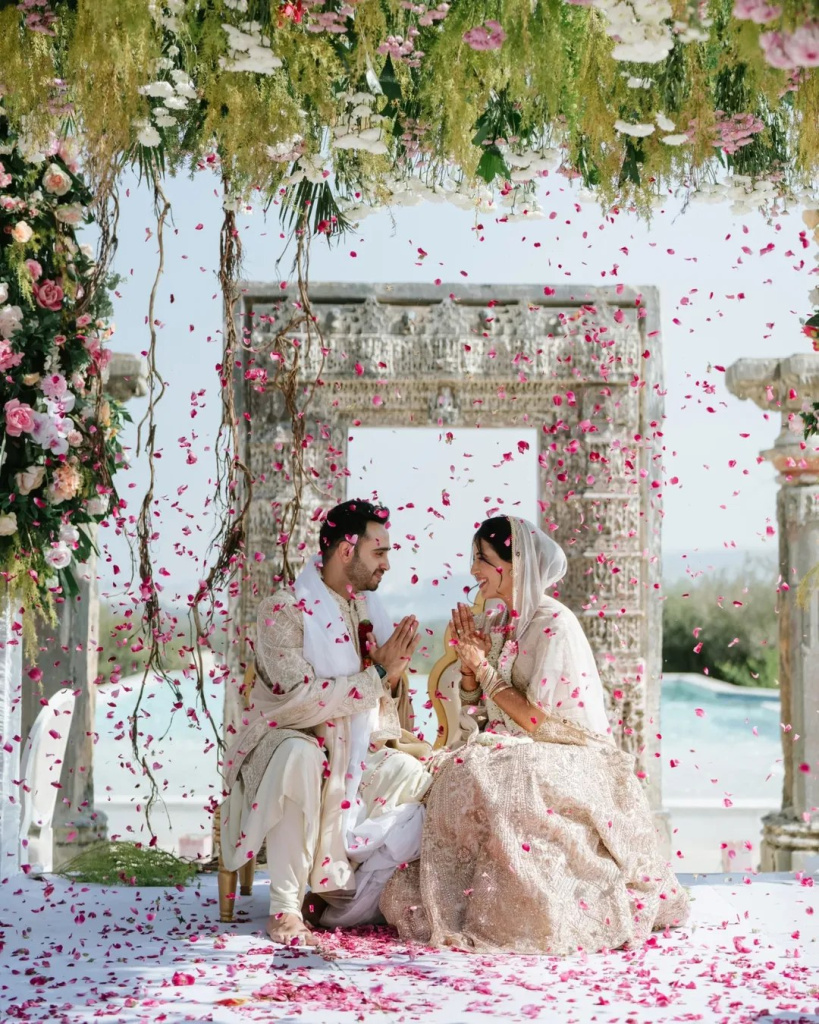
By keeping these FAQs in mind you’ll be better prepared to celebrate, plan, or attend a Hindu wedding with confidence, respect, and heartfelt enthusiasm.
What are appropriate Hindu wedding gifts to bring to the ceremony?
Monetary gifts in a shagun (auspicious) envelope are a popular choice in many Hindu communities, often with an amount ending in 1 (e.g., 501, 1001) for good luck. You could also consider gifting silverware, gold coins, or high-quality household items that the couple can use in their new home.
What are some creative Hindu wedding gift ideas for 2025?
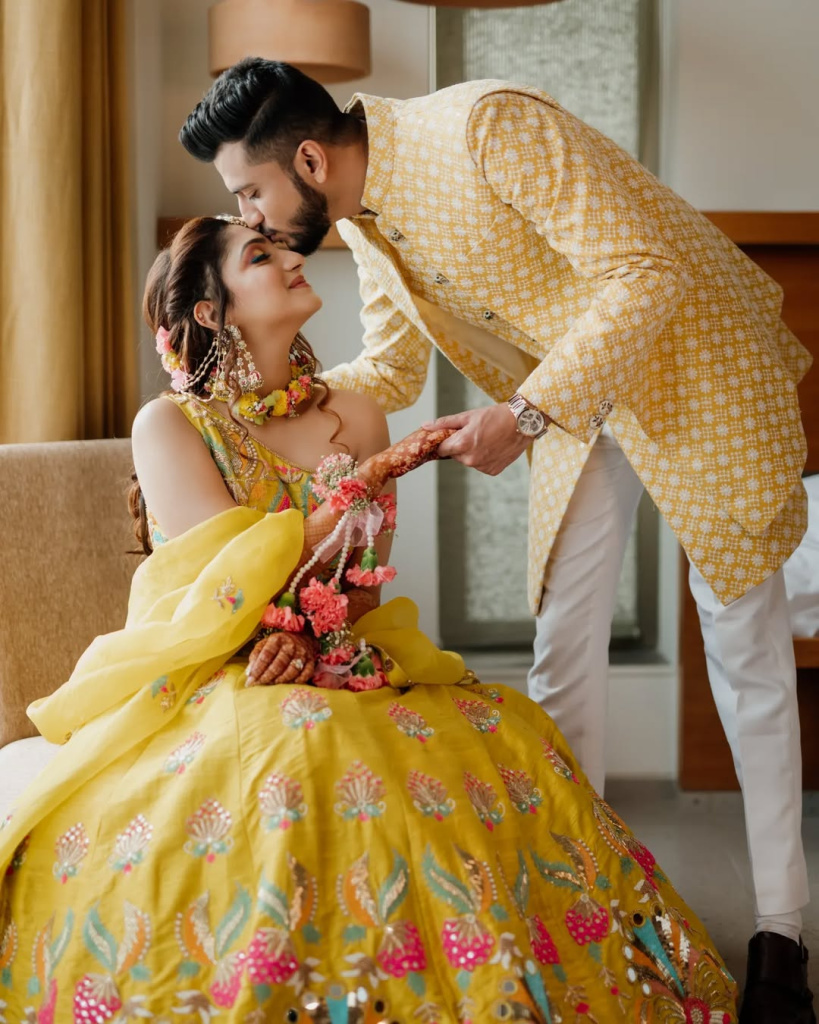
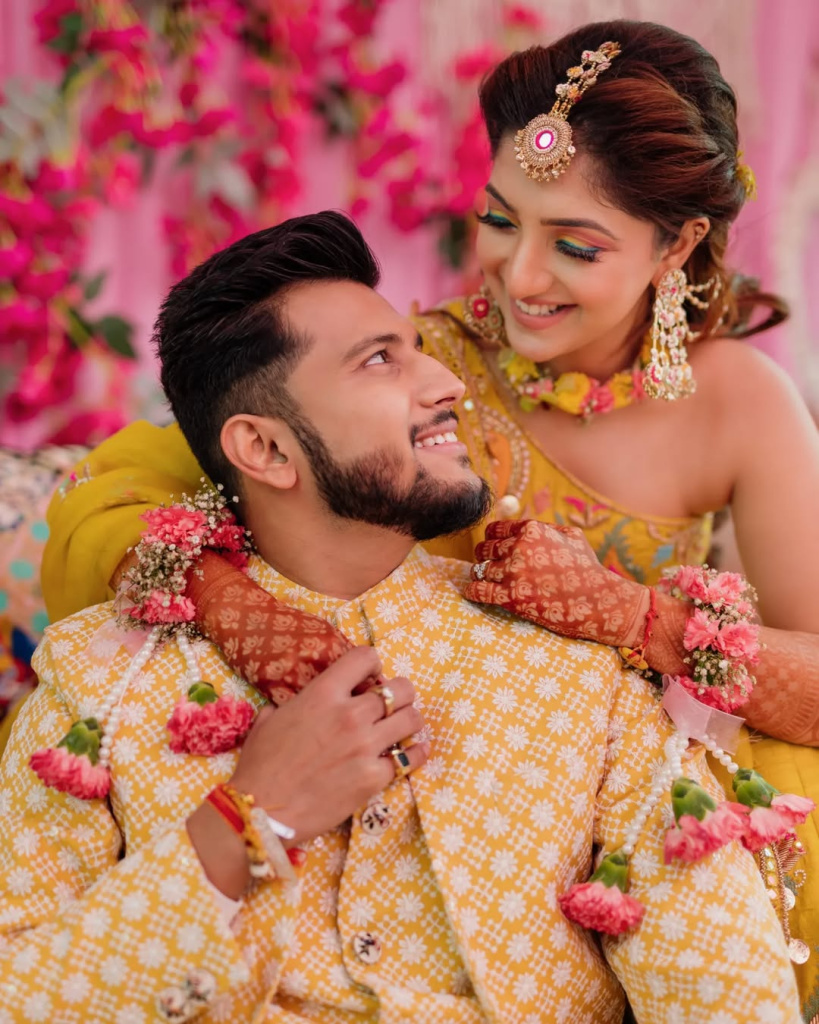
Personalized options are on the rise: custom artwork depicting the couple, monogrammed linens, or experiences like spa getaways. Handmade crafts from local artisans and donation certificates to a charity dear to the couple’s heart are also thoughtful, memorable ways to celebrate their union.
What are common Hindu wedding wishes to convey to the couple?
Traditional blessings often include praying for a harmonious marriage, prosperity, and a joyful family life. Simple phrases in English or Sanskrit—like “Wishing you a lifetime of togetherness and happiness” or “May you both always be guided by love and unity”—are heartfelt and well-received.
Is it possible to have a Hindu beach wedding?
Absolutely! Many couples choose picturesque seaside locations—such as Goa or other coastal spots in India—for a breezy, scenic ceremony. Adaptations may be necessary, like building a sturdy mandap on the sand and considering logistics for fire rituals in windy conditions, but a beach wedding can seamlessly blend tradition with a relaxed, holiday vibe.
Do Hindu wedding bridesmaids play a formal role in the ceremony?
While bridesmaids aren’t a traditional concept in most Hindu ceremonies, many modern weddings do include bridesmaids, groomsmen, and a maid of honor/best man. Their roles might involve helping the bride get ready, participating in dance performances at the sangeet, or assisting with smaller rituals, lending a contemporary flair to the otherwise traditional celebrations.
What are some popular Hindu wedding favours for guests?
Couples often give small tokens reflecting their culture or personal style—think custom spice boxes, handcrafted idols of Lord Ganesha, scented candles, or sweet treat boxes (laddoos, chocolates, mithai). Eco-friendly favors like potted succulents or seed packets are also becoming popular, infusing sustainability into the wedding experience.






